30 Wild Animals in United States Of America [Wildlife in United States]
Want to know more about the wildlife in United States of America?
Discover 30 wild animals in United States of America in this post, as well as interesting facts about them. 🇺🇸
Learn All About American Animals
Ready to learn all about American animals?
I’ve always been fascinated by animals, and by how they can be so different from one country to another. In this guide, we’ll focus on the many animals the United States has on the land, in the sky, and underwater.
I’ve split the guide into 5 categories:
- Native animals of the United States
- Endangered animals of the United States
- What is the American national animal?
- How many animals native to the United States?
- What are all 50 States’ Animals
Let’s dive in right away with our first category!
Native Animals of the United States
The United States is a North American country located in the southern half of the continent. It is made up of 50 states of which the last 2 ones are Hawaii and Alaska, is the 3rd most populous country in the world, has a very diverse geography, used to be home to Native American peoples, and is now a melting pot of ethnicities and cultures.
It is bordered by Canada and Mexico and shares maritime borders with countries such as Russia, the Bahamas, and Cuba, and although its largest city is New York City, its capital is Washington, D.C., which counts more than 689,000 inhabitants (but more than 6,385,000 if you include the metropolitan area).
An interesting part of the country that I wanted to tackle is its wildlife. In light of that, I have listed the best of it, and I hope you will love learning what animals live in the United States.
Here’s the United States animals list.
1. Bald eagle
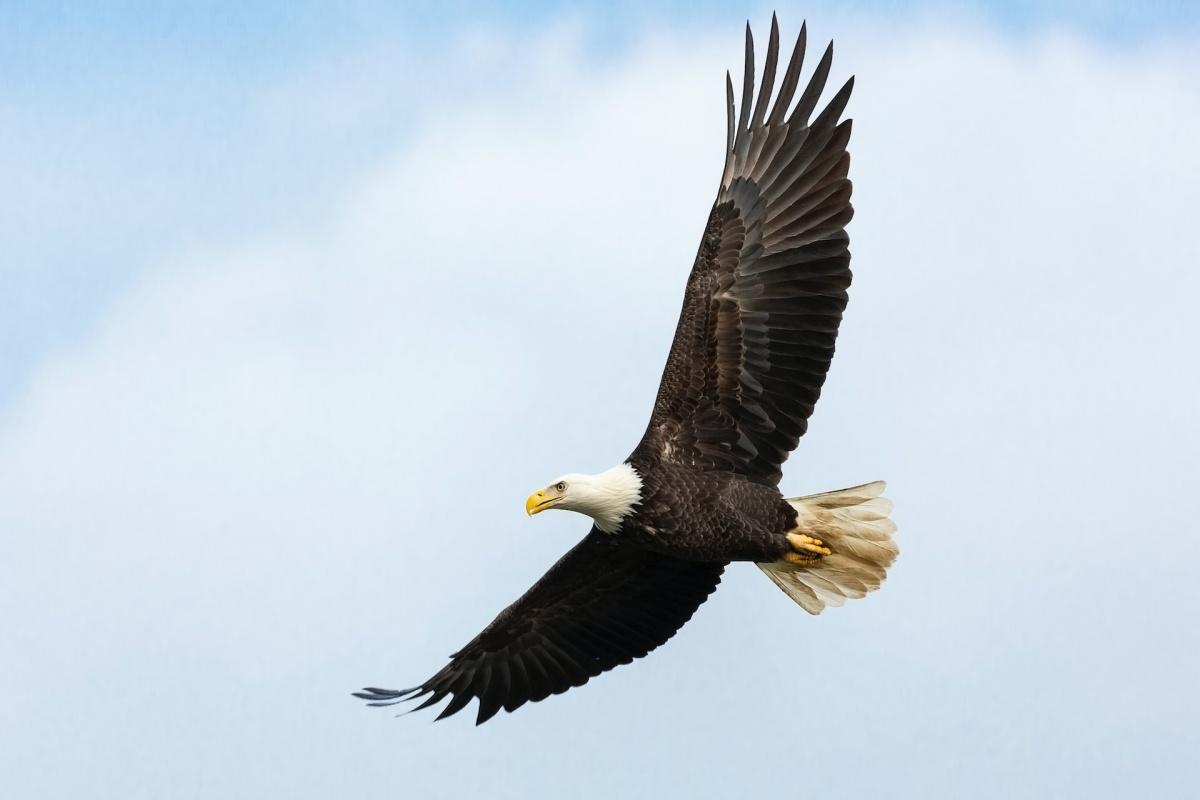
- Name: Bald eagle
- Scientific name: Haliaeetus leucocephalus
- Conservation status:
The bald eagle is one of the most famous symbols of the United States throughout the entire world. It is one of the largest and heaviest species of eagle in the world and is a sea eagle, which means it largely subsists on fish and other aquatic animals.
Despite its name, the bald eagle is not actually bald but instead white-headed. It is renowned for its extremely wide and deep nests, the largest tree nests of all animal species!
2. Raccoon
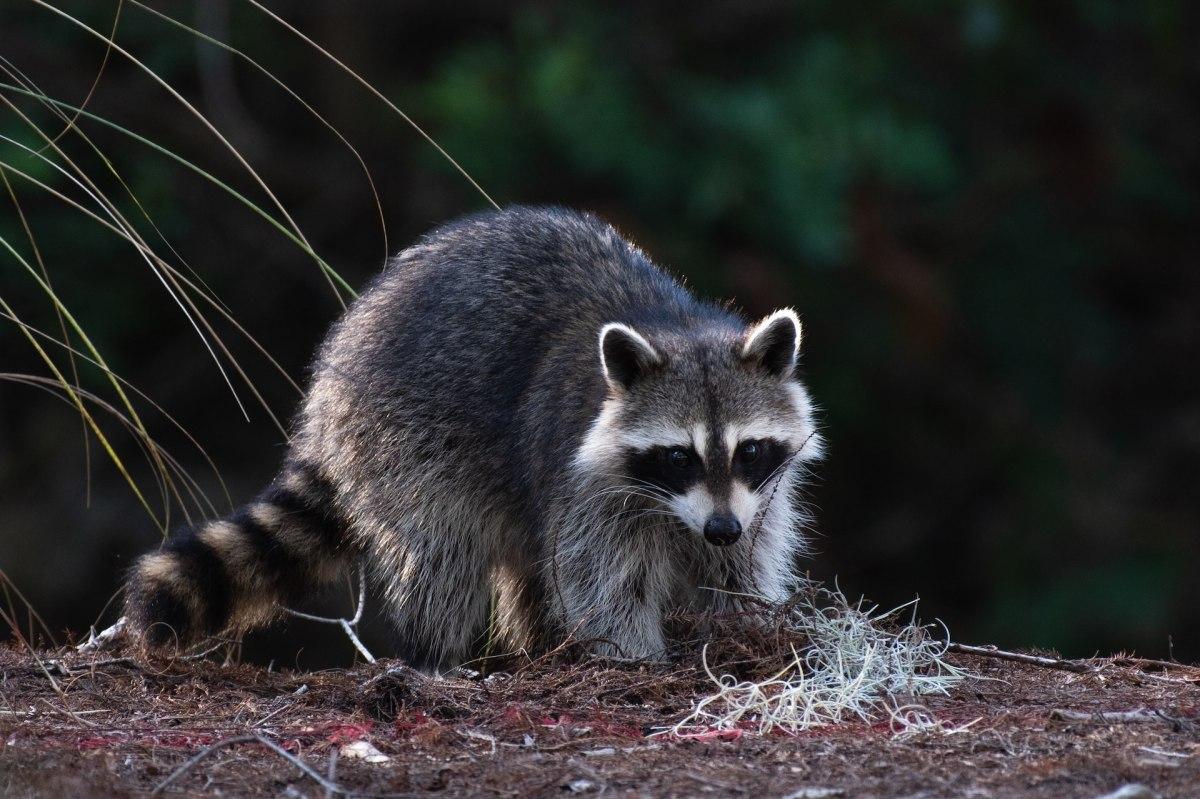
- Name: Raccoon
- Scientific name: Procyon lotor
- Conservation status:
Very different from the bald eagle but maybe just as important and famous, the raccoon is a very familiar animal to most Americans. It is bold and opportunistic, and will not hesitate to move into urban areas in order to find food, especially near garbage dumps or trash cans.
This mammal inhabits the wooded areas across all of the country, but can also be found in marshes and mountainous areas.
3. Cougar
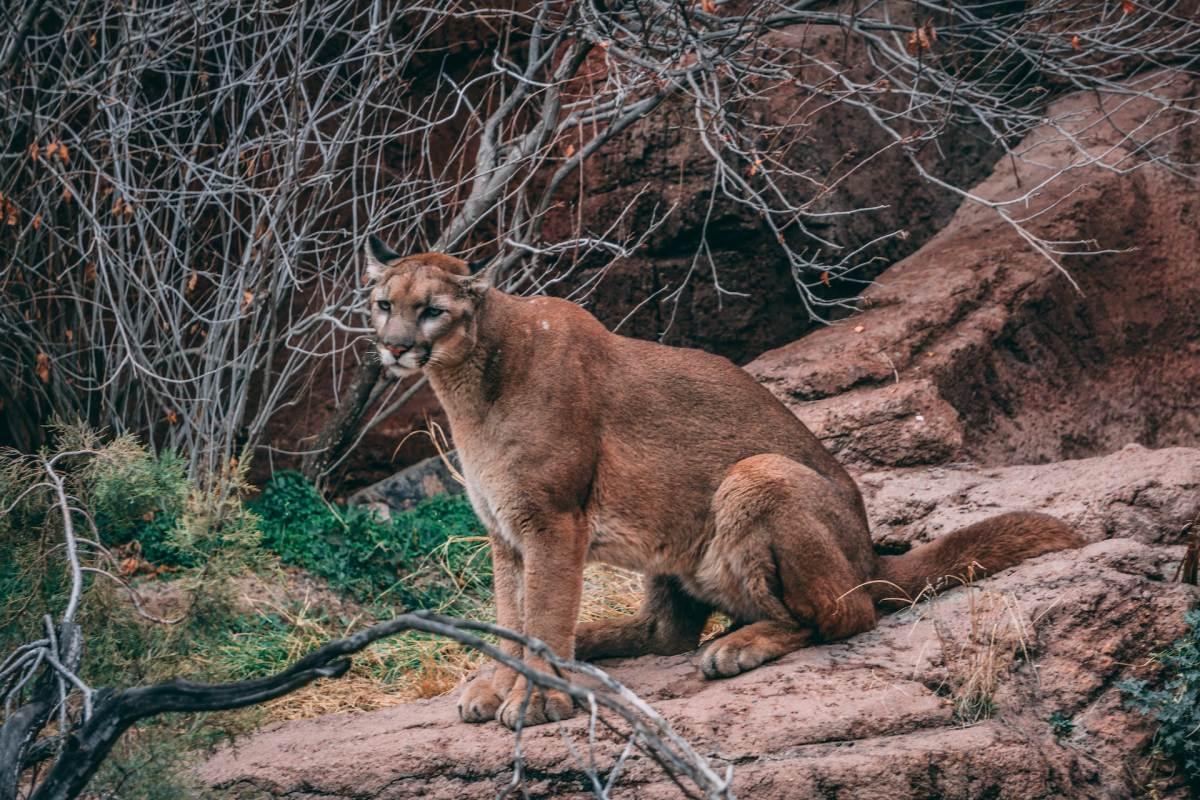
- Name: Cougar
- Scientific name: Puma concolor
- Conservation status:
The cougar, also known as the mountain lion, the panther, the catamount, or the puma, is the largest cat in North America, second only to the jaguar in all of the Americas. Although its range extends from Canada to northern Argentina, it is mostly restricted to the western half of the United States nowadays, while its historical range used to span eastward into the Atlantic coast.
This powerful predator is one of the scariest encounters you could have in the United States, so be careful!
4. American alligator
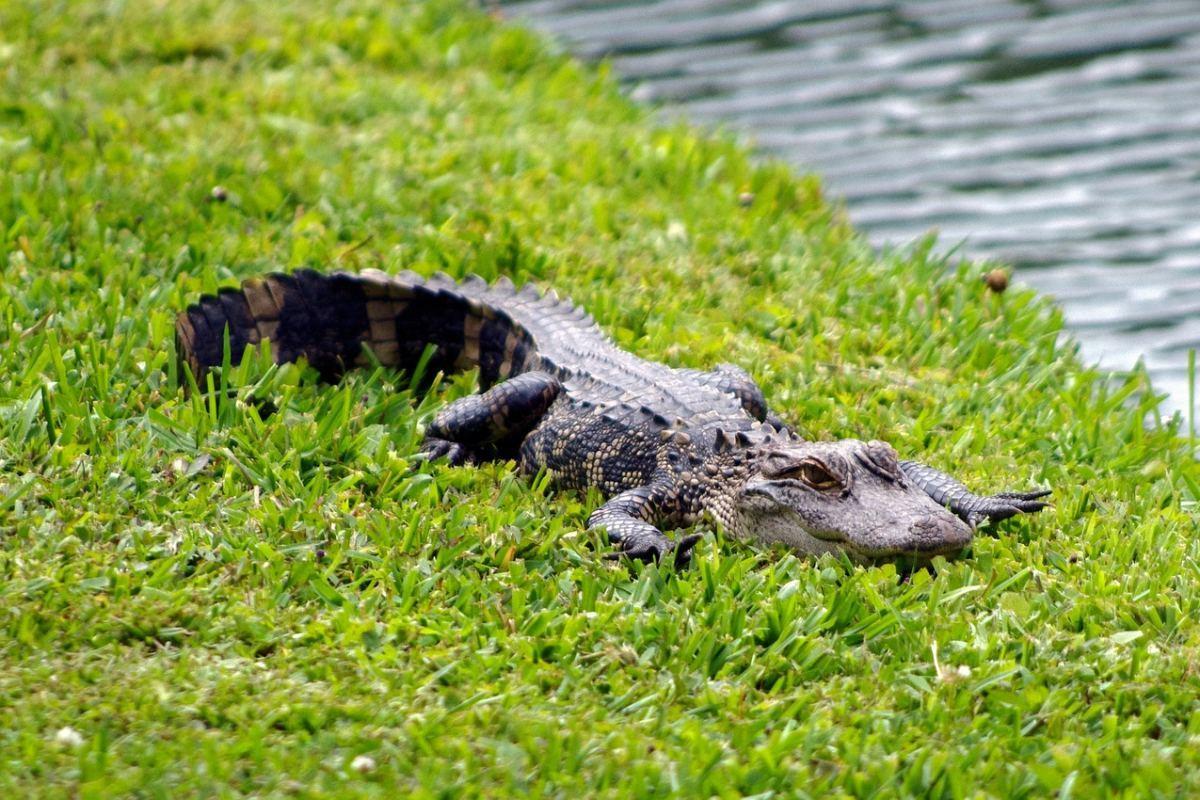
- Name: American alligator
- Scientific name: Alligator mississippiensis
- Conservation status:
Although it is one of the main emblems of Florida, the American alligator, largely known as the gator, is also found in 7 other of southeastern states. It is a large crocodilian and an abundant reptile native to the marshes of the country, and it is a very strong apex predator that can kill anything within its range, making it particularly dangerous.
This alligator used to be seriously endangered because of overhunting, but it has been protected since 1973, and it is now thriving.
5. Pronghorn
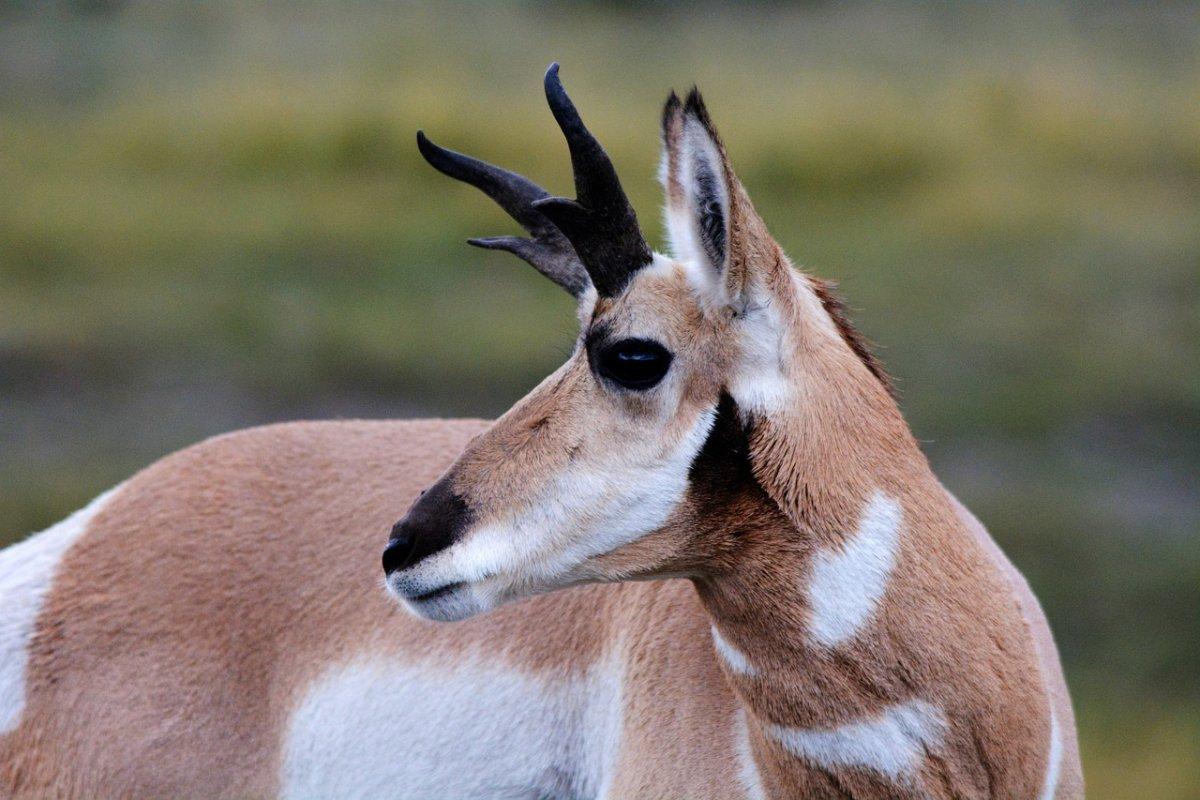
- Name: Pronghorn
- Scientific name: Antilocapra americana
- Conservation status:
The pronghorn, also known as the American antelope, the speed goat, or the prairie antelope, is actually not an antelope but rather a relative of the okapi and the giraffe. It is well known for being the fastest land mammal in all of the Western Hemisphere, reaching outstanding speeds of up to 90 km/h / 55 mph!
This mammal is restricted to the western half of the United States, very similar to the cougar.
6. Groundhog
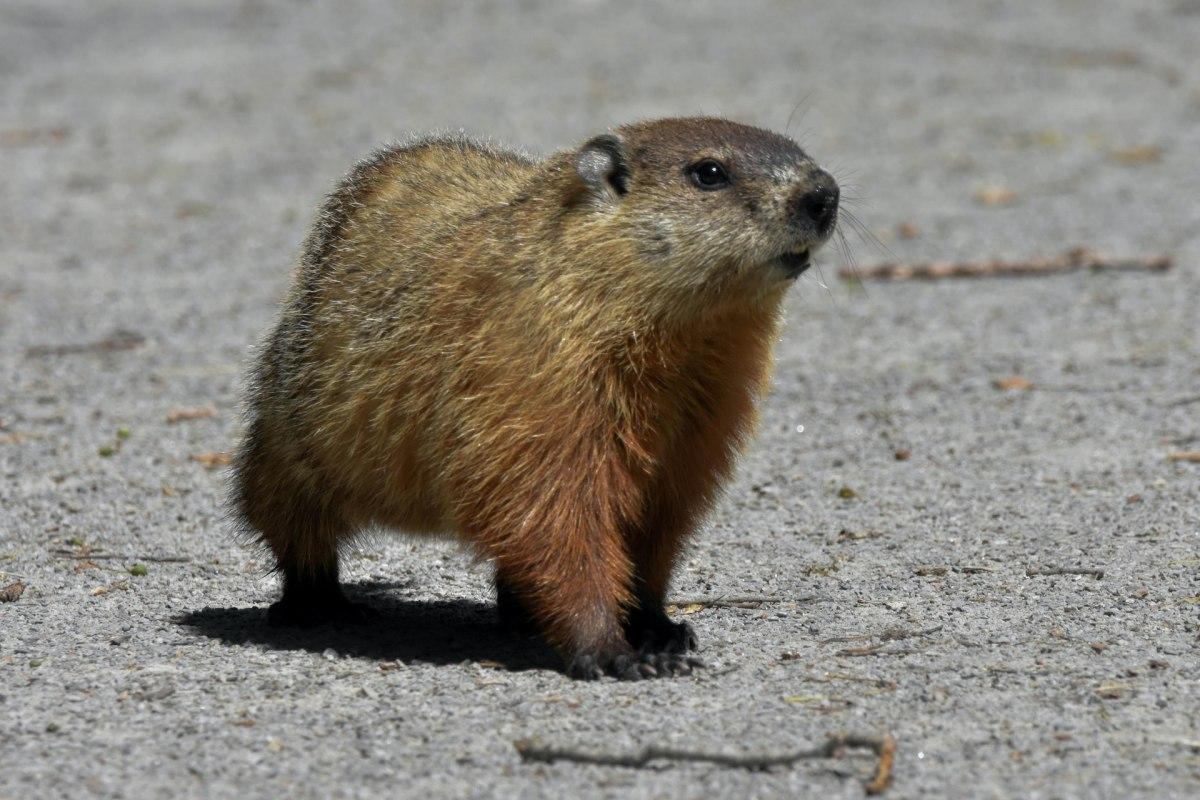
- Name: Groundhog
- Scientific name: Marmota monax
- Conservation status:
The groundhog, also known as the monax, the Canada marmot, the woodchuck, or the whistle pig, is a large species of rodent endemic to North America. Although a marmot, it inhabits the lowlands of the eastern United States and is noted for its very high intelligence.
This rodent, although it lives in small aggregations, is considered the most solitary of all marmots. It feeds on wild grasses, berries, and agricultural crops.
7. American bison
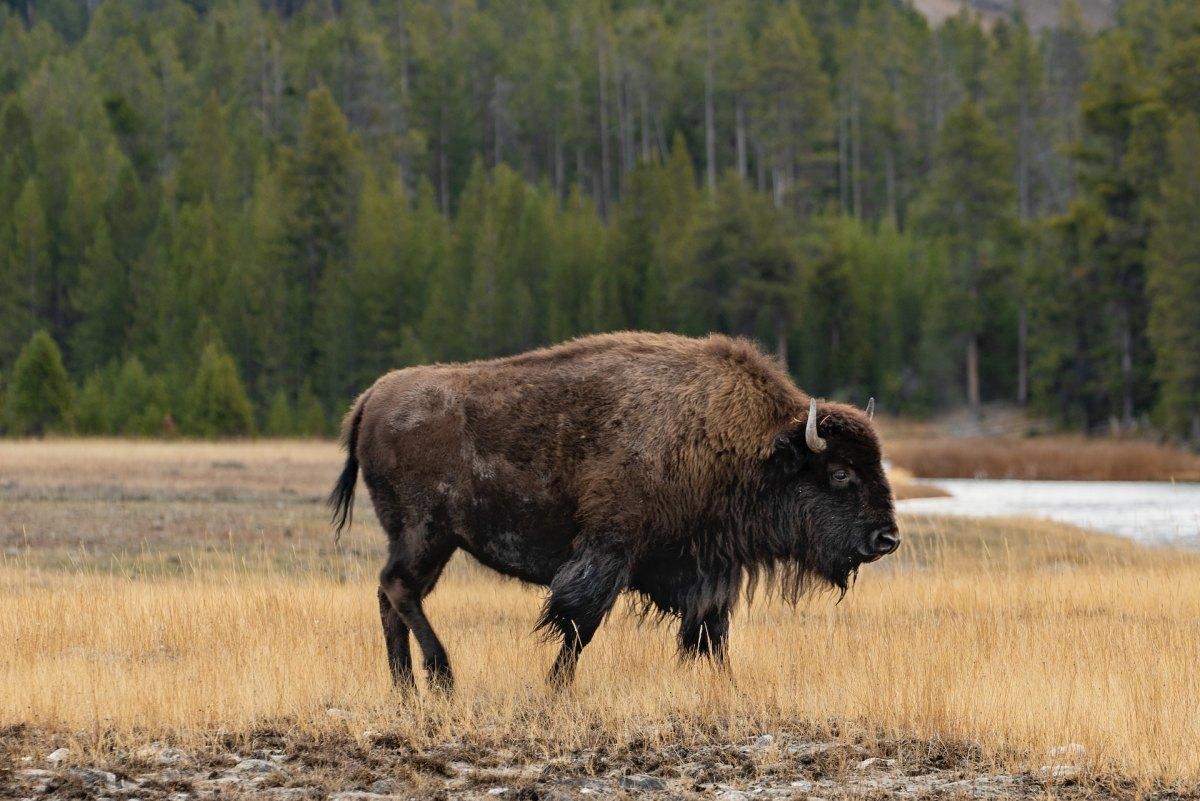
- Name: American bison
- Scientific name: Bison bison
- Conservation status:
The American bison, also known as the American buffalo, is the heaviest terrestrial mammal in North America, and the national animal of the United States. It is listed as near threatened with extinction because it has been massacred throughout the 19th century but is being reintroduced to more and more states.
Now, the American bison can be found in large herds but in small areas. Reintroduction efforts have been successful though, and its range should expand in the near future.
8. White-tailed deer
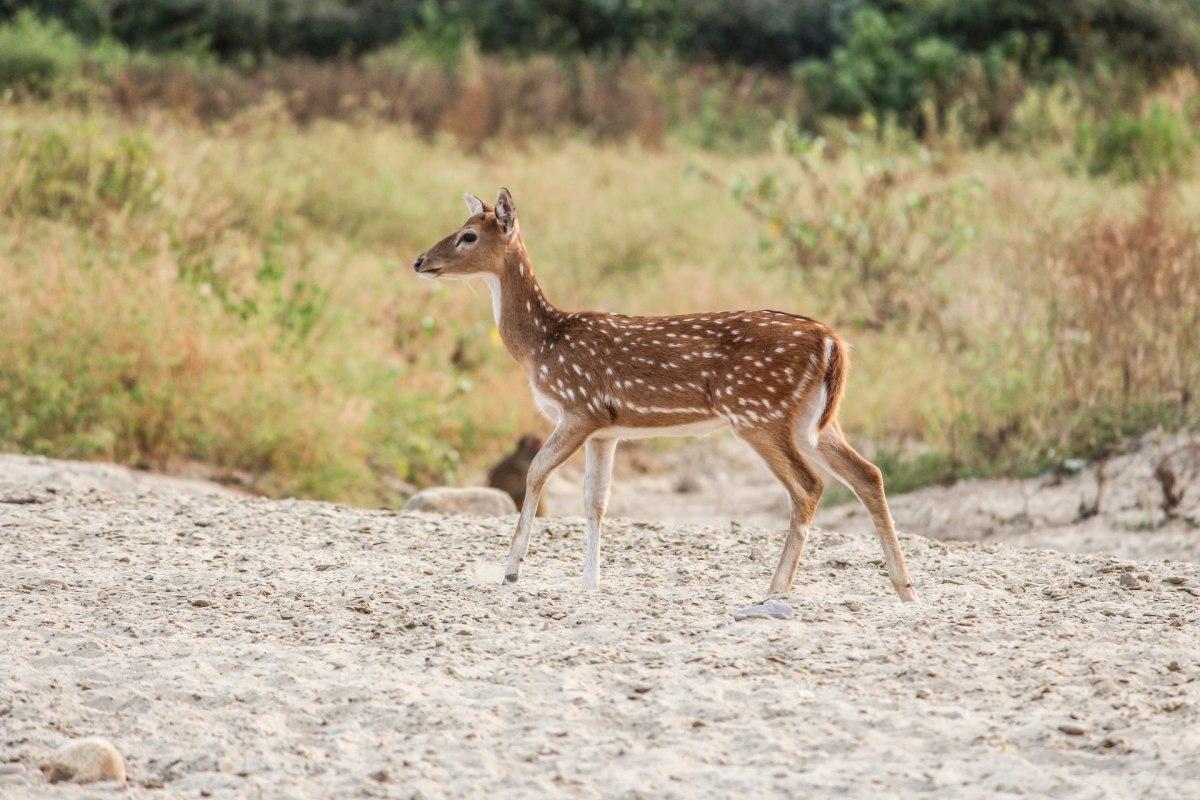
- Name: White-tailed deer
- Scientific name: Odocoileus virginianus
- Conservation status:
The white-tailed deer, also known as the Virginia deer or simply the whitetail, is a very common species of deer endemic to the Americas. It is the state animal of multitudes of states, and is extremely abundant in Texas, where there are more than 5.3 million individuals!
This deer is very adaptable, which explains its success as a species. As its name suggests, it has a white tail, which it raises when startled.
9. North American beaver
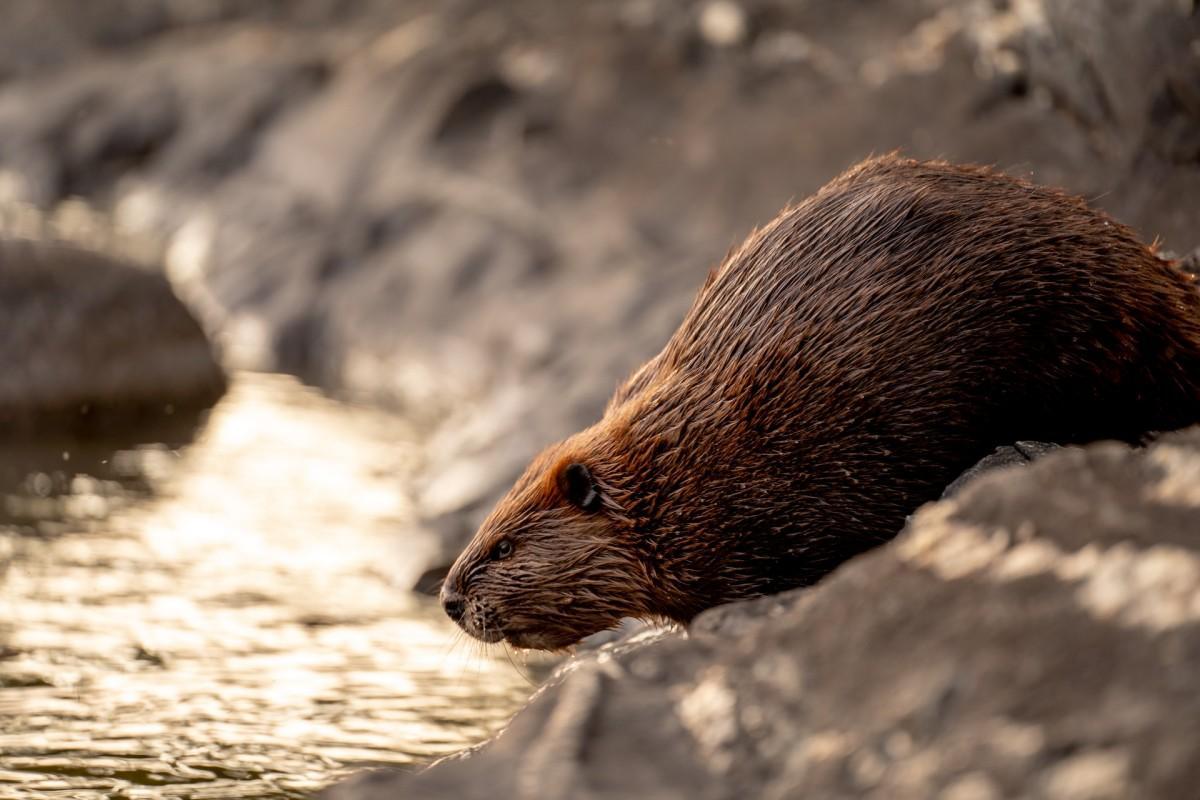
- Name: North American beaver
- Scientific name: Castor canadensis
- Conservation status:
Although a major symbol of Canada, the North American beaver, also known as the American beaver or the Canadian beaver, can be found throughout much of the United States as well. It is the largest rodent in North America and one of the largest ones in the world and is known for its lodges and dams, built at night, with an underwater entrance.
The beaver is not always appreciated everywhere, as it is often considered a pest and causes serious damage and flooding.
10. Striped skunk
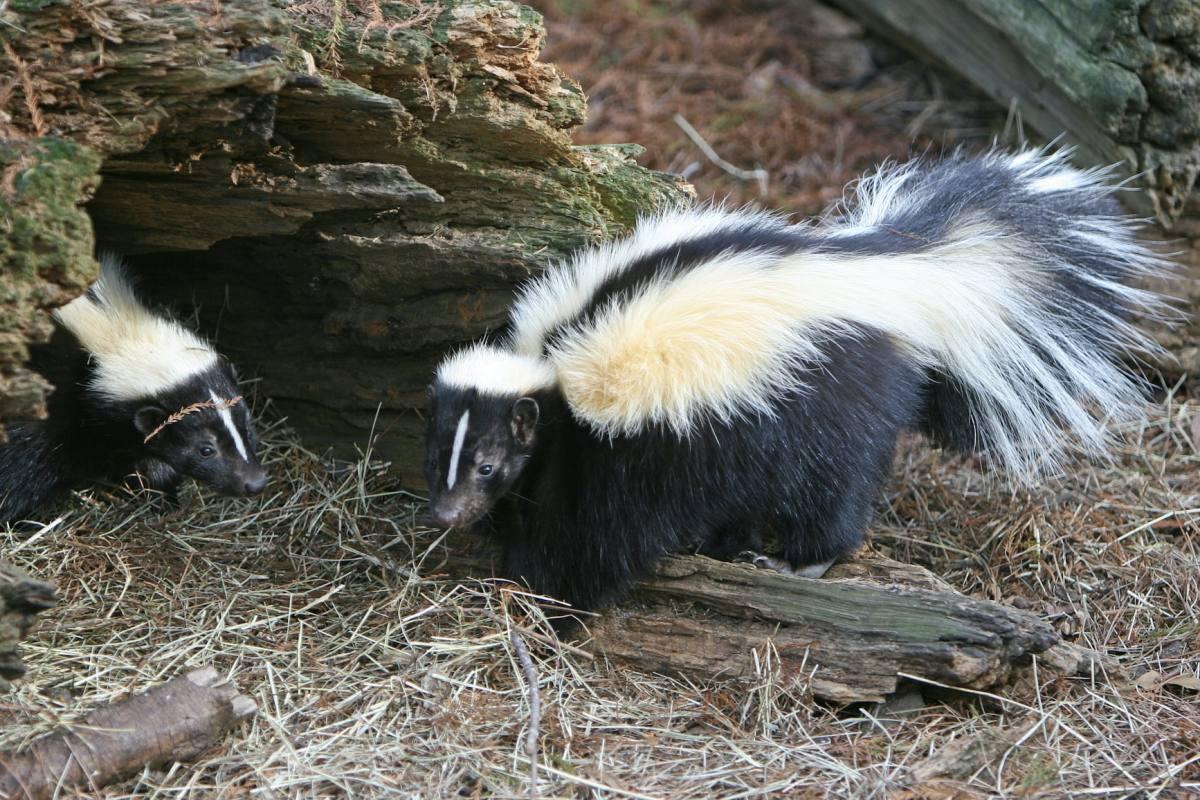
- Name: Striped skunk
- Scientific name: Mephitis mephitis
- Conservation status:
The striped skunk, famous for its appearance in children’s books and cartoons, is a species of skunk endemic to North America. It can be found throughout almost all of the United States, except for the most desertic regions in the Southwest, as well as in neighboring Canada and northern Mexico.
Skunks are known for the very strong odor they can emit, and the striped skunk is no exception to that. It has also been trapped and bred for its fur.
11. American black bear
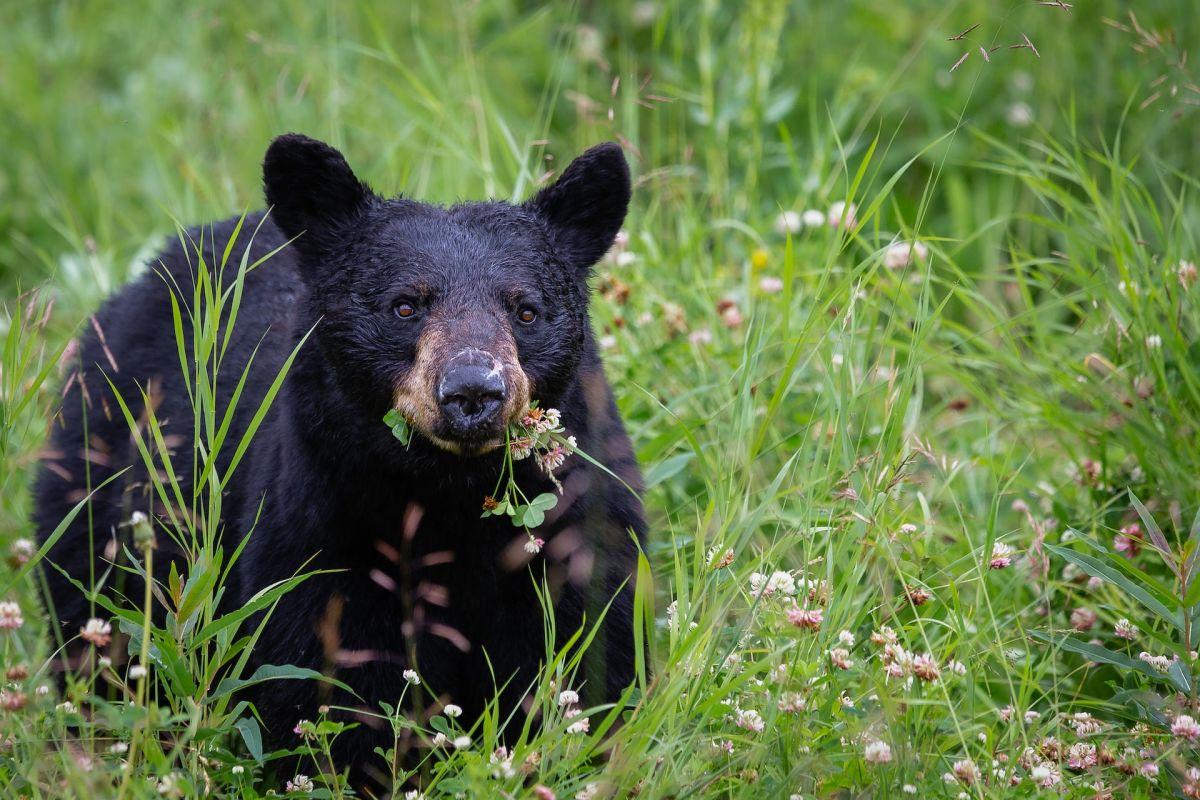
- Name: American black bear
- Scientific name: Ursus americanus
- Conservation status:
Despite the grizzly bear being much more famous, it is by far the American black bear, also known as the black bear, that is more numerous in North America: in fact, there are twice as many American black bears as all other bear species combined!
This bear is medium-sized, usually inhabits the forests of the country, and can be found in most states. However, it will often reach as far as urban areas in order to find food.
12. Green sea turtle
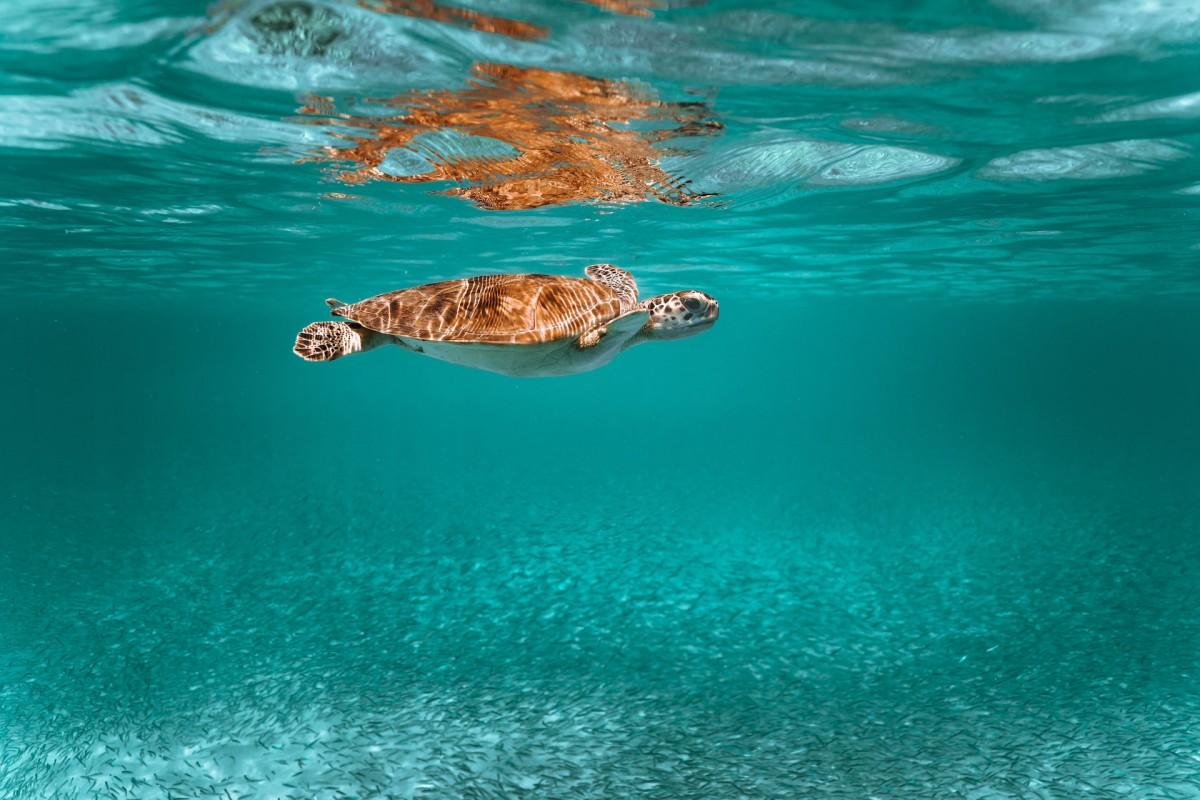
- Name: Green sea turtle
- Scientific name: Chelonia mydas
- Conservation status:
The green sea turtle, also known as the Pacific green turtle or the black sea turtle, is an endangered species of turtle found around the Hawaiian Islands, as well as in the warm parts of the Pacific and Atlantic Oceans.
This turtle migrates long distances between feeding waters and hatching beaches. The main threats it has to face are hunting for food, predation of its eggs, and human disturbance such as pollution and light pollution.
13. Grizzly bear
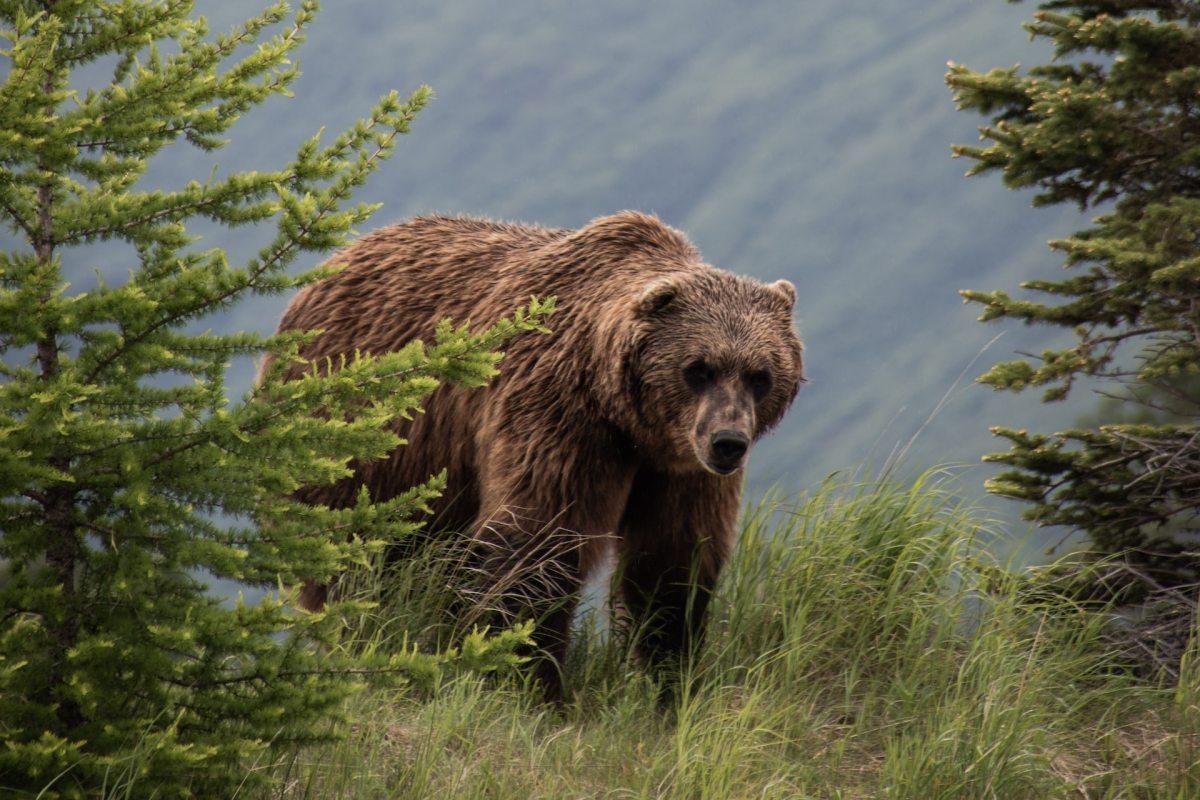
- Name: Grizzly bear
- Scientific name: Ursus arctos horribilis
- Conservation status:
The grizzly bear, also known as the North American brown bear or simply the grizzly, is a large subspecies of the brown bear endemic to North America. It can be found in some of the northern states, but mostly throughout much of Alaska.
This very powerful mammal originated from Eurasia, and traveled to North America about 50,000 years ago; there are now about 55,000 grizzly bears spread throughout the continent.
14. Coyote
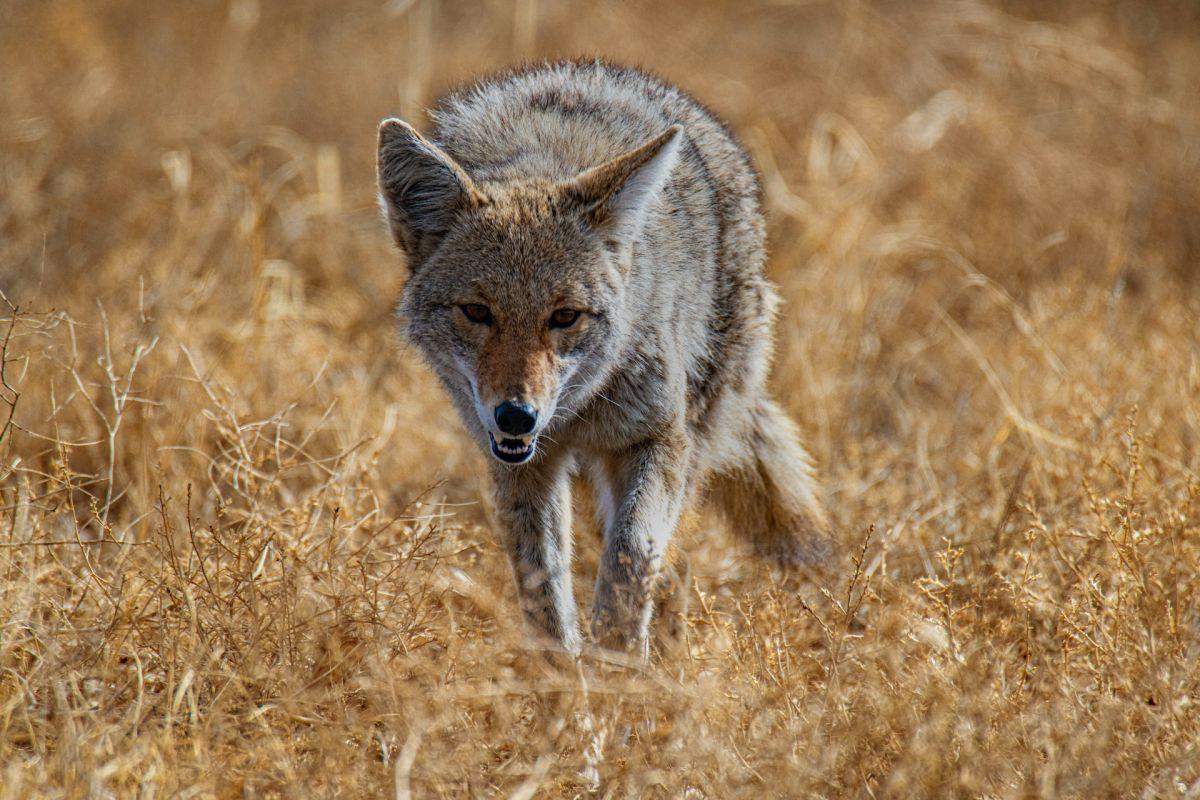
- Name: Coyote
- Scientific name: Canis latrans
- Conservation status:
The coyote is the most emblematic canid of the United States. It can be found throughout almost all of North America, is further divided into 19 subspecies, and is globally on the rise thanks to the decline of the gray wolf, as well as its ability to thrive in human-disturbed areas.
This canid has long been part of Native American folklore and is still well known to this day. Generally speaking, it is seen as untrustworthy, and even dangerous.
15. American badger
- Name: American badger
- Scientific name: Taxidea taxus
- Conservation status:
The American badger is a species of badger endemic to North America. It can be found in various shapes and colors, and its range spans from central Mexico to central Canada.
This mustelid is pretty powerful and ferocious. It plays a particularly important role as an environmental engineer, building lots of burrows used by other animals such as rodents and terrestrial birds. When it comes to feeding, it is more carnivorous than its Eurasian counterpart, and it mainly hunts for ground squirrels, moles, and gophers.
16. California sea lion
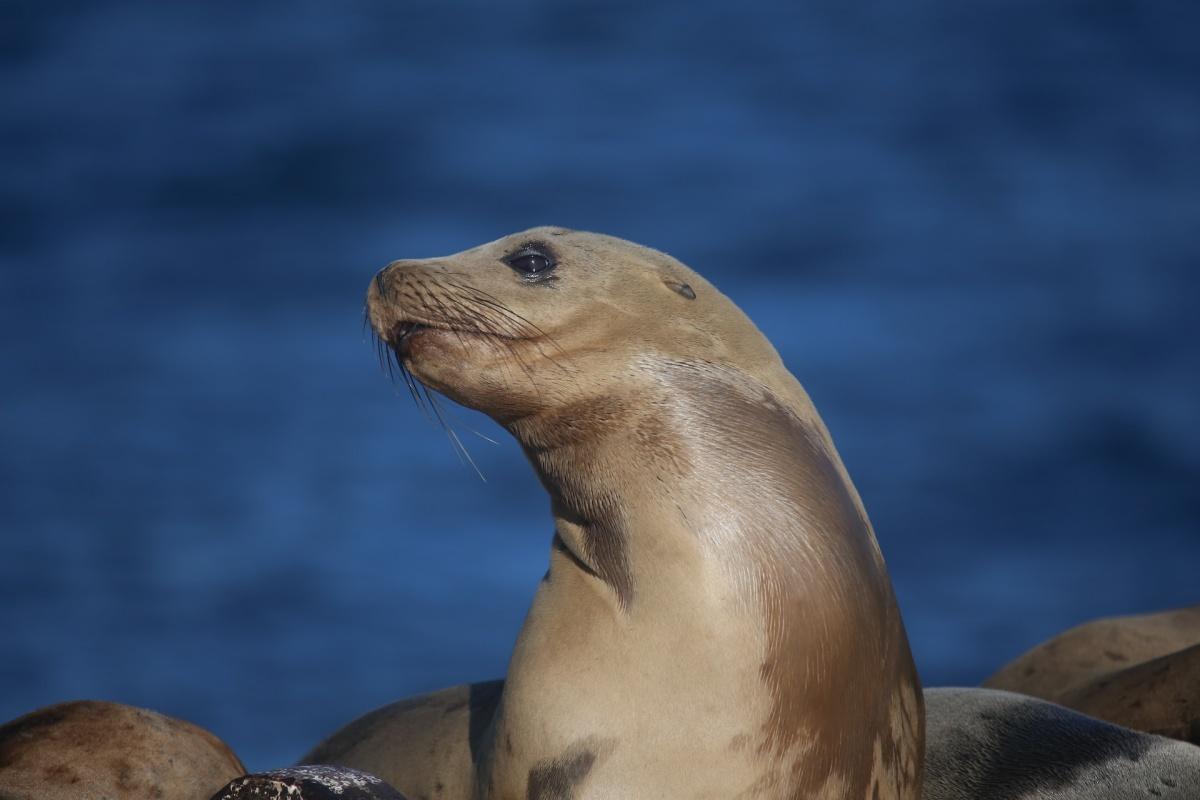
- Name: California sea lion
- Scientific name: Zalophus californianus
- Conservation status:
The California sea lion is a species of seal native to western North America. It is a very famous tourist attraction on Pier 39 in San Francisco and has become used to human disturbance.
This seal establishes its territory from May to August, and females are free to move between territories. It is notably intelligent, does not especially fear humans, and can be trained to perform beautiful acrobatics.
17. Alligator snapping turtle
- Name: Alligator snapping turtle
- Scientific name: Macrochelys temminckii
- Conservation status:
Don’t be fooled by the general sluggish nature of turtles: the alligator snapping turtle is one of the most powerful animals you could encounter in the United States. As its name suggests, it has extremely powerful jaws that can crush bones and cut fingers cleanly. It lives in the southeastern United States.
This turtle is carnivorous and opportunistic. It feeds on aquatic species, sometimes scavenges, and uses its appendage to lure prey.
18. Timber rattlesnake
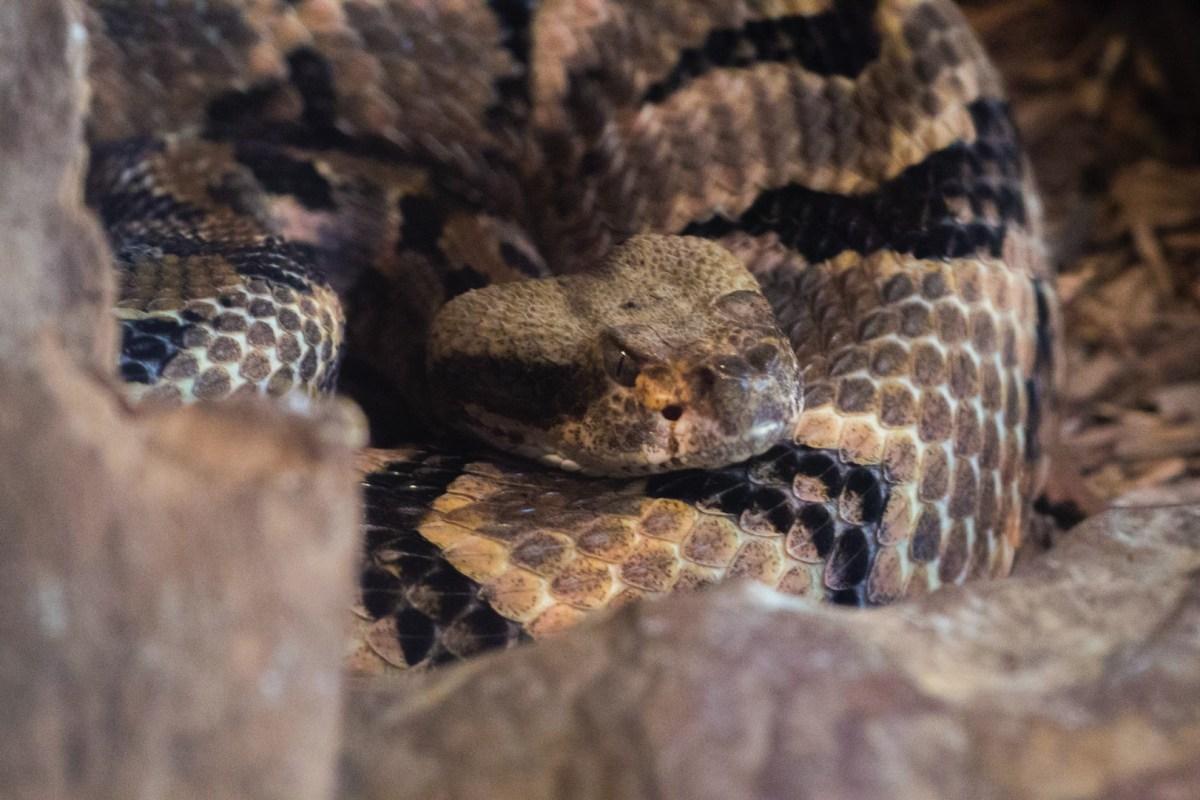
- Name: Timber rattlesnake
- Scientific name: Crotalus horridus
- Conservation status:
The timber rattlesnake, also known as the banded rattlesnake or the canebrake rattlesnake, is a venomous species of snake endemic to the eastern half of the United States. It is the most northerly distributed venomous snake in North America, and the only rattlesnake in the populous northeastern United States.
This reptile spends a vast portion of its time basking in the sun, usually in open rocky areas. It feeds on small mammals, as well as frogs and birds.
19. Black-tailed prairie dog
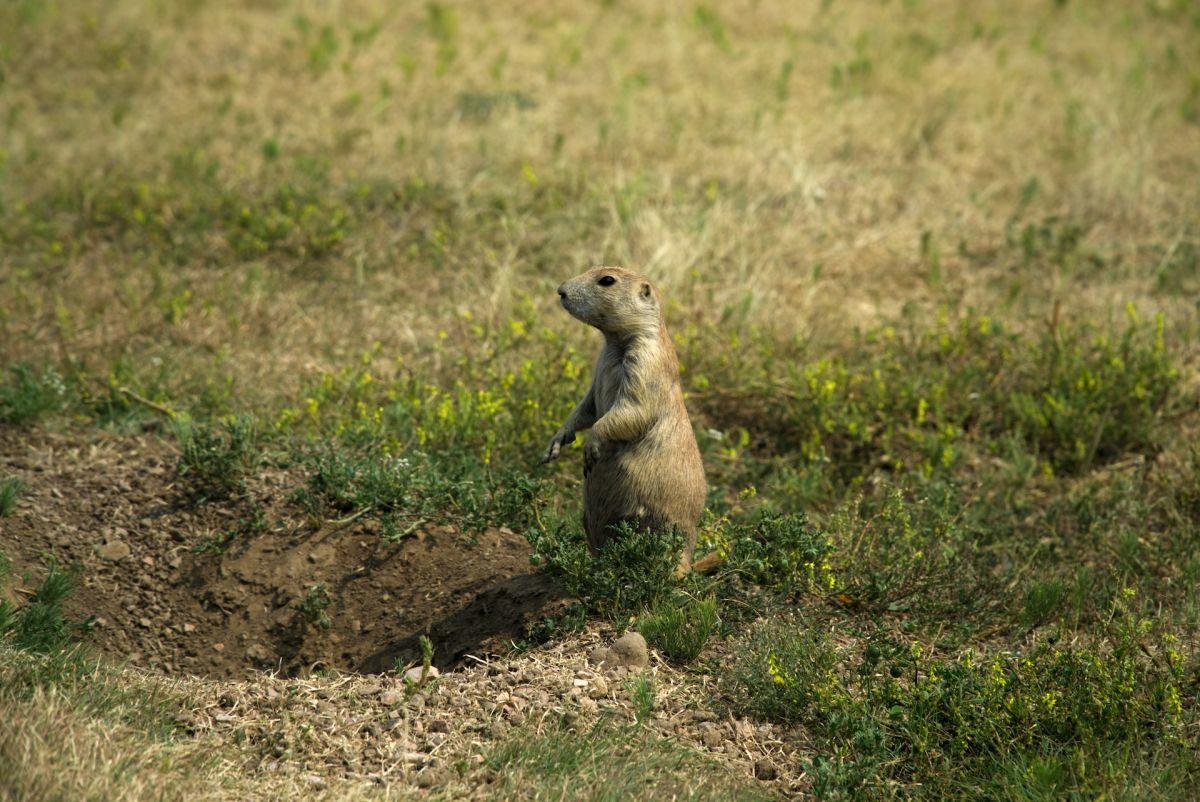
- Name: Black-tailed prairie dog
- Scientific name: Cynomys ludovicianus
- Conservation status:
The black-tailed prairie dog is a species of rodent endemic to the Great Plains of the central United States, as well as very restricted parts of Canada and Mexico. It lives in large colonies, the largest of them reportedly living in Texas, with more than 400,000,000 individuals spreading over 64,000 km² / 25,000 sq mi!
This rodent is active by day and lives in grassland habitats, where it feeds on grasses.
20. Nine-banded armadillo
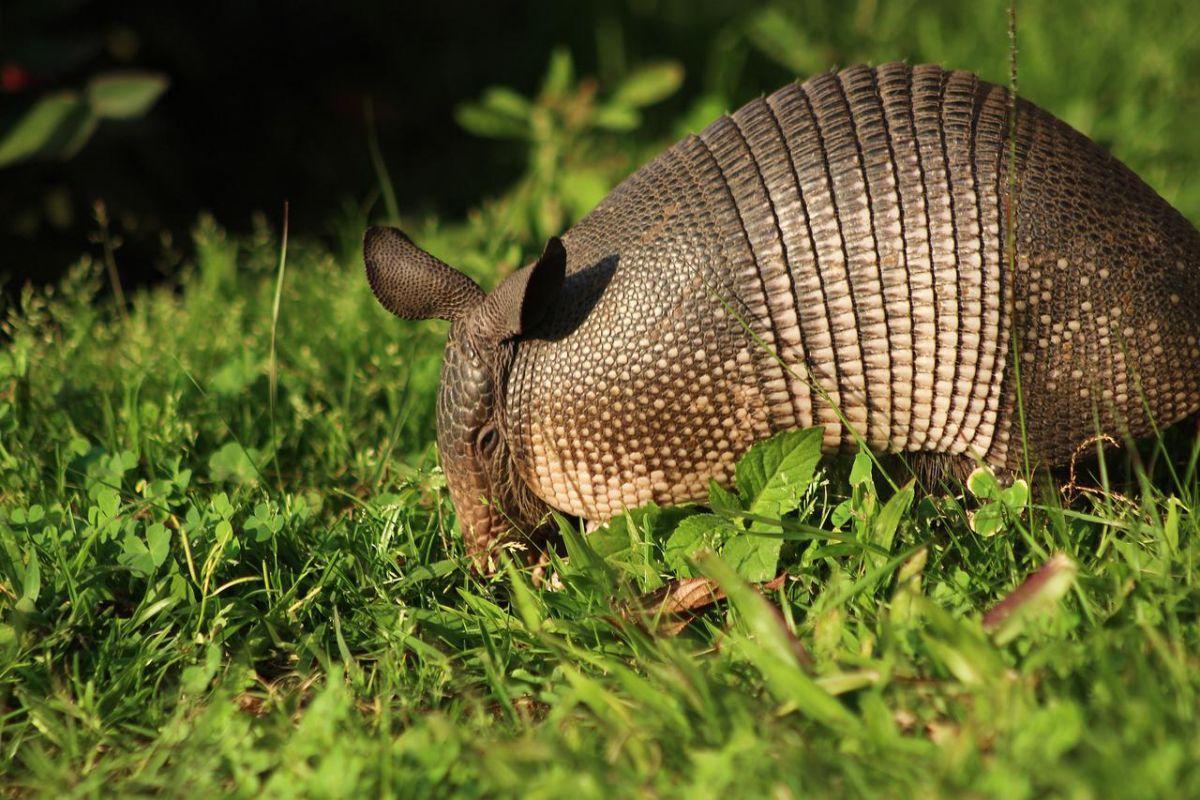
- Name: Nine-banded armadillo
- Scientific name: Dasypus novemcinctus
- Conservation status:
The nine-banded armadillo, also known as the common long-nosed armadillo or the nine-banded long-nosed armadillo, is the most common and widespread of all the armadillos, which are generally speaking extremely threatened.
This peculiar shielded mammal can be found in the southern states such as Texas, Kansas, and Oklahoma. It is a serious danger on the roads, often jumping as high as 122 cm / 4 ft straight in the air when frightened.
21. Bobcat
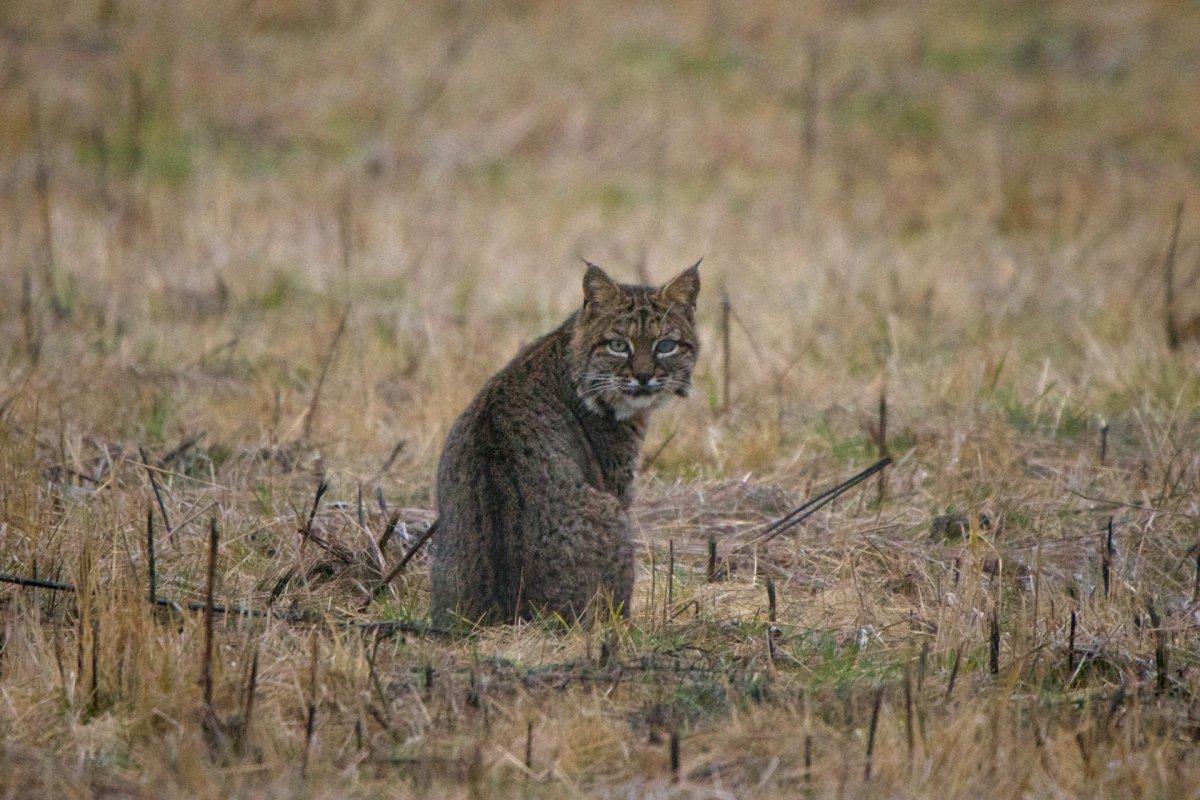
- Name: Bobcat
- Scientific name: Lynx rufus
- Conservation status:
The bobcat, also known as the red lynx, is a medium-sized species of wild cat endemic to North America. It can be found across almost all of the United States, as well as in parts of Mexico and Canada.
This felid is particularly adaptable, and while it mostly feeds on hares and rabbits, it also hunts for amphibians, birds, and deer. It is further divided into 2 subspecies, one found east of the Great Plains, and the other west.
22. North American porcupine
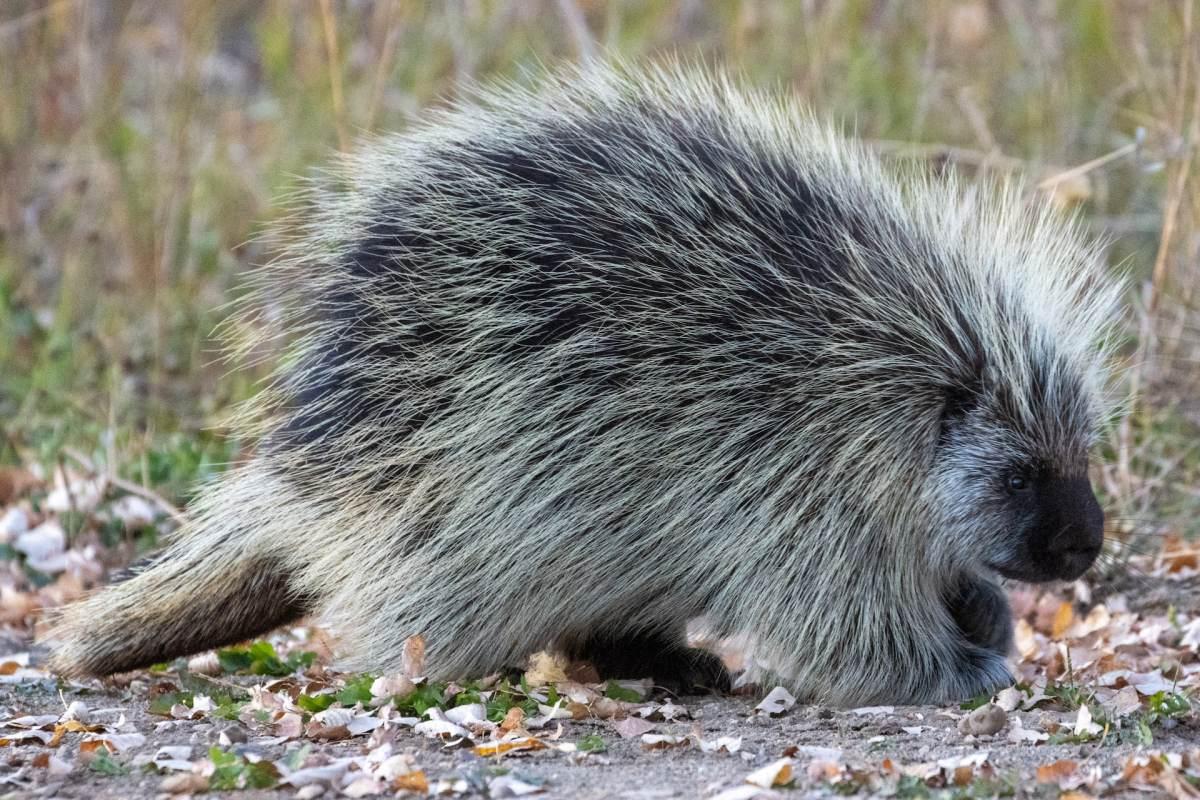
- Name: North American porcupine
- Scientific name: Erethizon dorsatum
- Conservation status:
The North American porcupine, also known as the Canadian porcupine, is one of the largest rodents in North America, and it is covered in as many as 30,000 quills.
Interestingly enough, it first came to South America from Africa, before reaching North America during the Great American Interchange, 3 million years ago. Funnily enough, it is a specialist species that will eat from 1 to 2 trees out of every 1,000 trees!
23. Virginia opossum
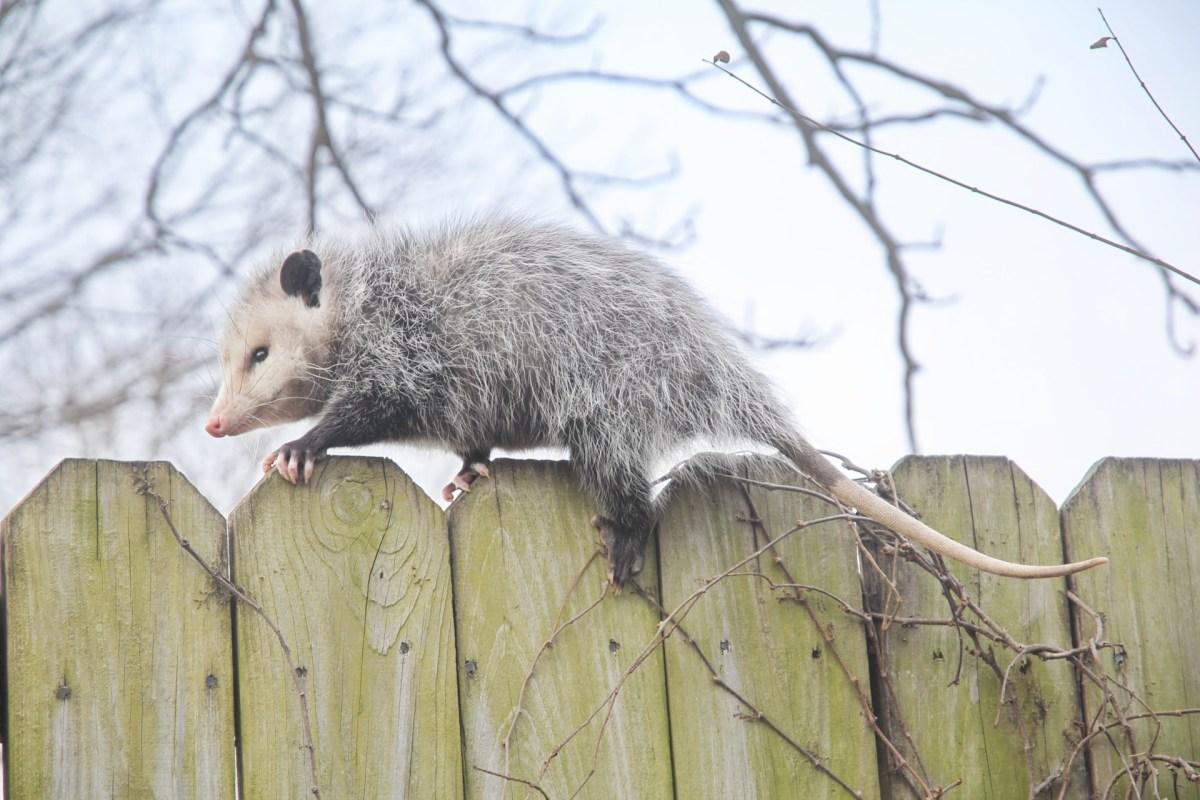
- Name: Virginia opossum
- Scientific name: Didelphis virginiana
- Conservation status:
The Virginia opossum, widely known as the possum, is very similar to the raccoon in the sense that it is well-known by North Americans, and can often be spotted in urban areas. Besides, it is highly opportunistic and omnivorous, reproduces at a very high rate, and does not hesitate to approach garbage dumps.
Sadly, because of its tendency to feed on roadside carrion, the Virginia opossum often gets killed itself on the roads.
24. North American river otter
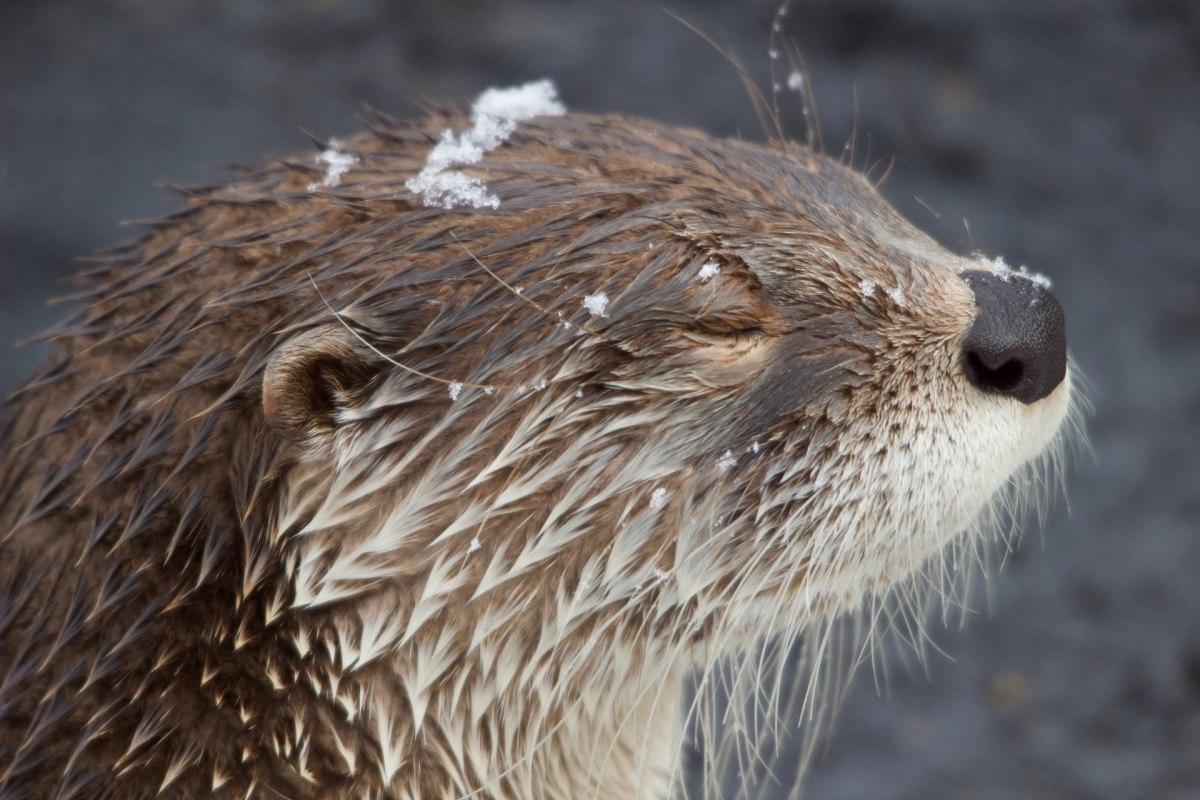
- Name: North American river otter
- Scientific name: Lontra canadensis
- Conservation status:
The North American river otter, also known as the northern river otter or simply the river otter, is a carnivorous species of semi-aquatic mustelid endemic to North America. Despite being considered of least concern, it seriously suffers from trapping, habitat loss, and pollution, and is thus on the decline.
Similarly to most predators, the North American river otter feeds on whatever is available which, in its habitat, is largely fish, freshwater mollusks, and amphibians.
25. Gray whale
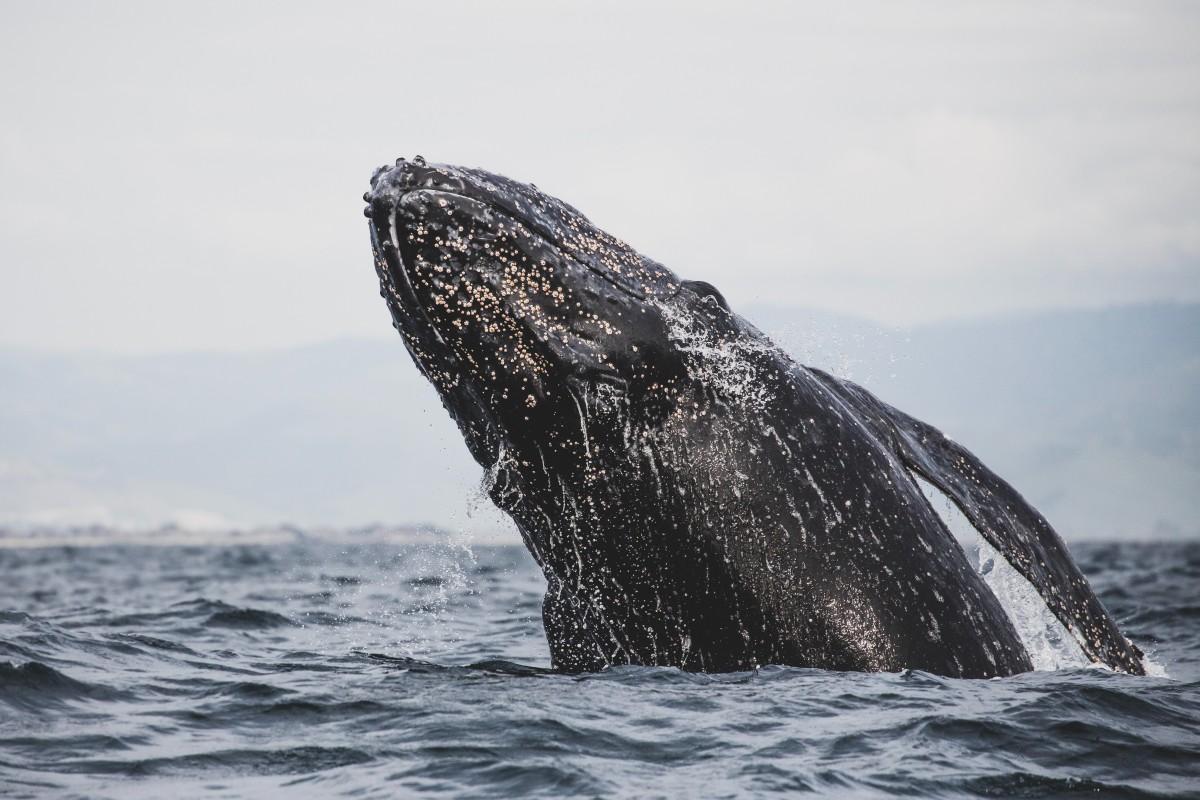
- Name: Gray whale
- Scientific name: Eschrichtius robustus
- Conservation status:
We haven’t discussed it much as we cannot cover absolutely everything, but the United States has 2 very long coastlines on the Atlantic and the Pacific Oceans, and is, as such, home to fantastic marine wildlife, including the gray whale.
Also known as the Pacific gray whale, the California gray whale or the gray back whale, this large whale migrates between feeding and breeding waters every year. It can weigh as much as 41 tonnes / 90,000 lb, reach lengths of up to 14.9 m / 49 ft, and live as long as 80 years!
26. Gray wolf
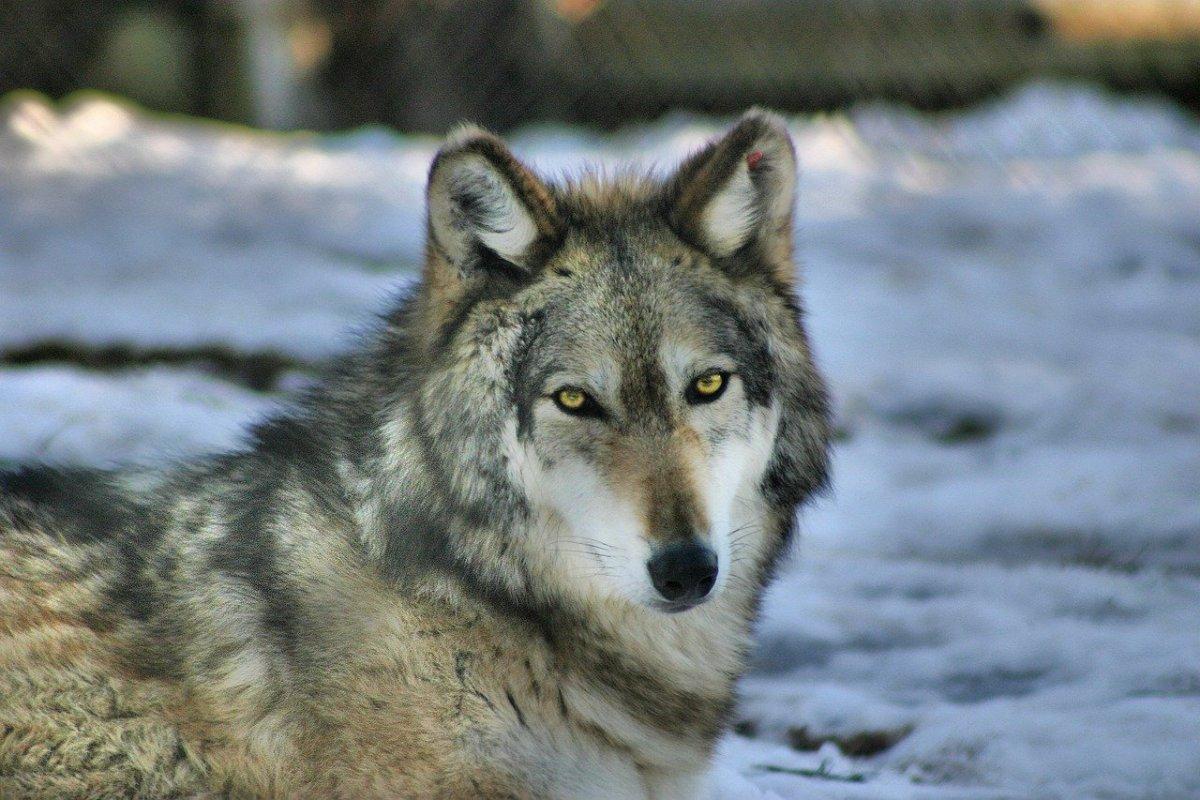
- Name: Gray wolf
- Scientific name: Canis lupus
- Conservation status:
While it used to roam much of the western United States, the gray wolf is now extinct throughout most of its range, which is largely due to the rise of the coyote, its main competitor, as well as habitat loss through deforestation.
This majestic canid is very widespread, and can in fact be found throughout most of the Northern Hemisphere. Sadly, it is also on the decline in other parts of its range, mostly due to the same factors (in Europe, the gray wolf has to compete with the golden jackal, an omnivorous and adaptable animal).
27. Black-tailed jackrabbit
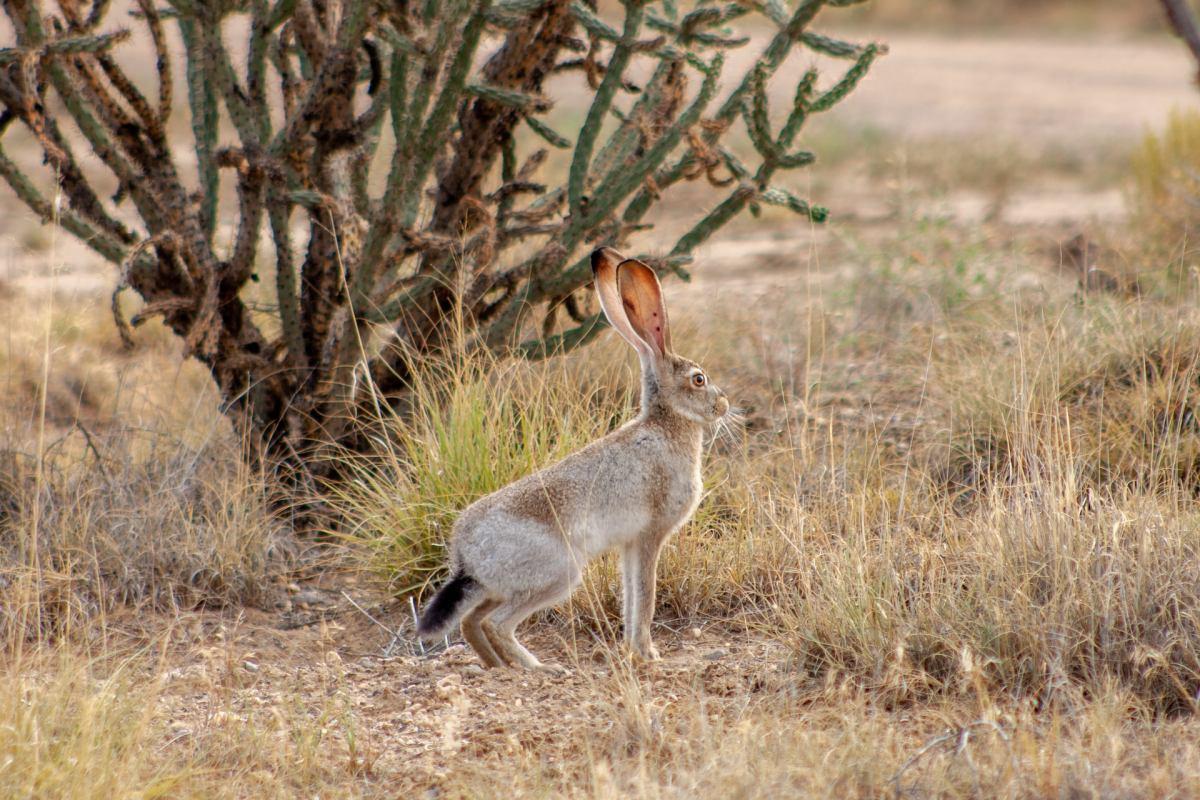
- Name: Black-tailed jackrabbit
- Scientific name: Lepus californicus
- Conservation status:
The black-tailed jackrabbit, also known as the American desert hare, is a common species of hare found in the western parts of the United States and in neighboring Mexico. It is known for its very large ears and is found at altitudes between sea level and 3,000 m / 10,000 ft above it.
This hare is ready to move only minutes after being born; it is also well camouflaged, has eyes open, and is fully furred, which is why females usually don’t protect or even stay near their offspring during nursing.
28. Moose
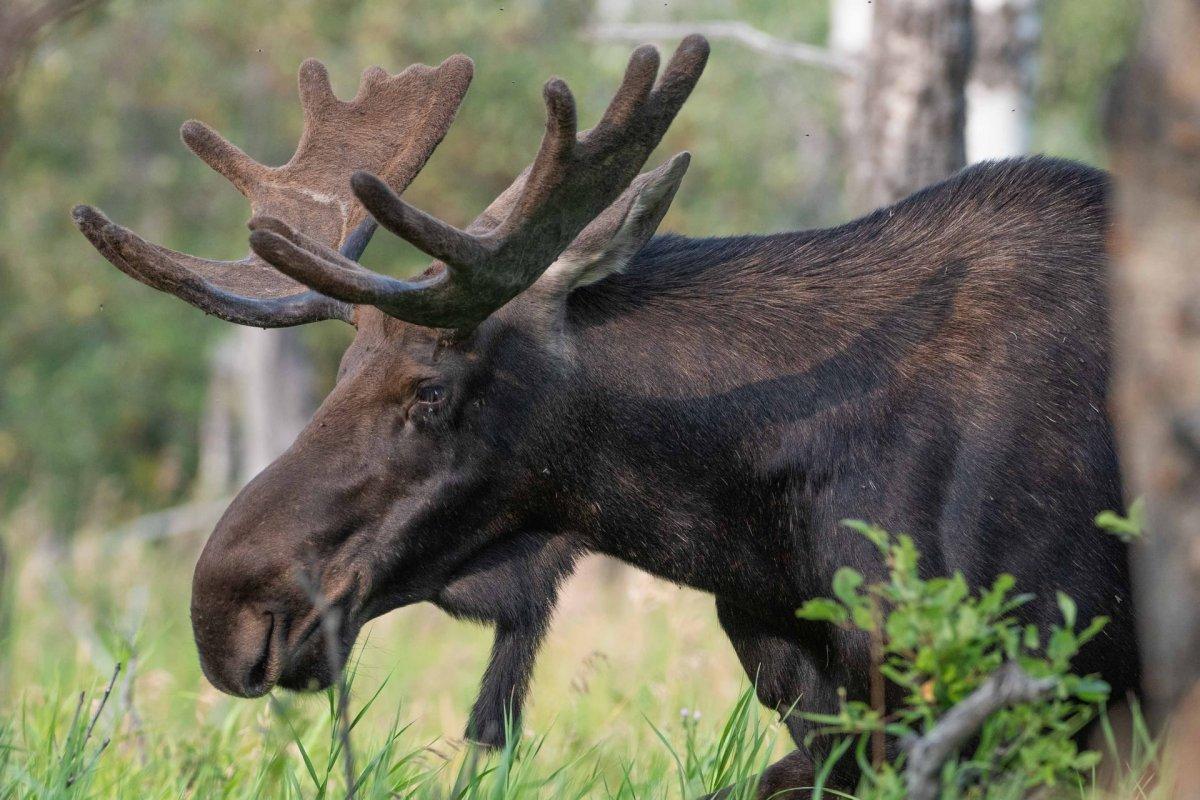
- Name: Moose
- Scientific name: Alces alces
- Conservation status:
The moose, also known as the elk in Eurasia (and not to be confused with the elk, another species found in the United States), is the largest and heaviest species of deer in the world. It is found in the northernmost parts of the globe, but some isolated populations exist as far south as the central United States.
This very large animal is incredibly impressive, and it has broad antlers. Generally speaking, it is a very successful species, is often hunted for its meat and antlers, and is globally on the rise.
29. Walrus
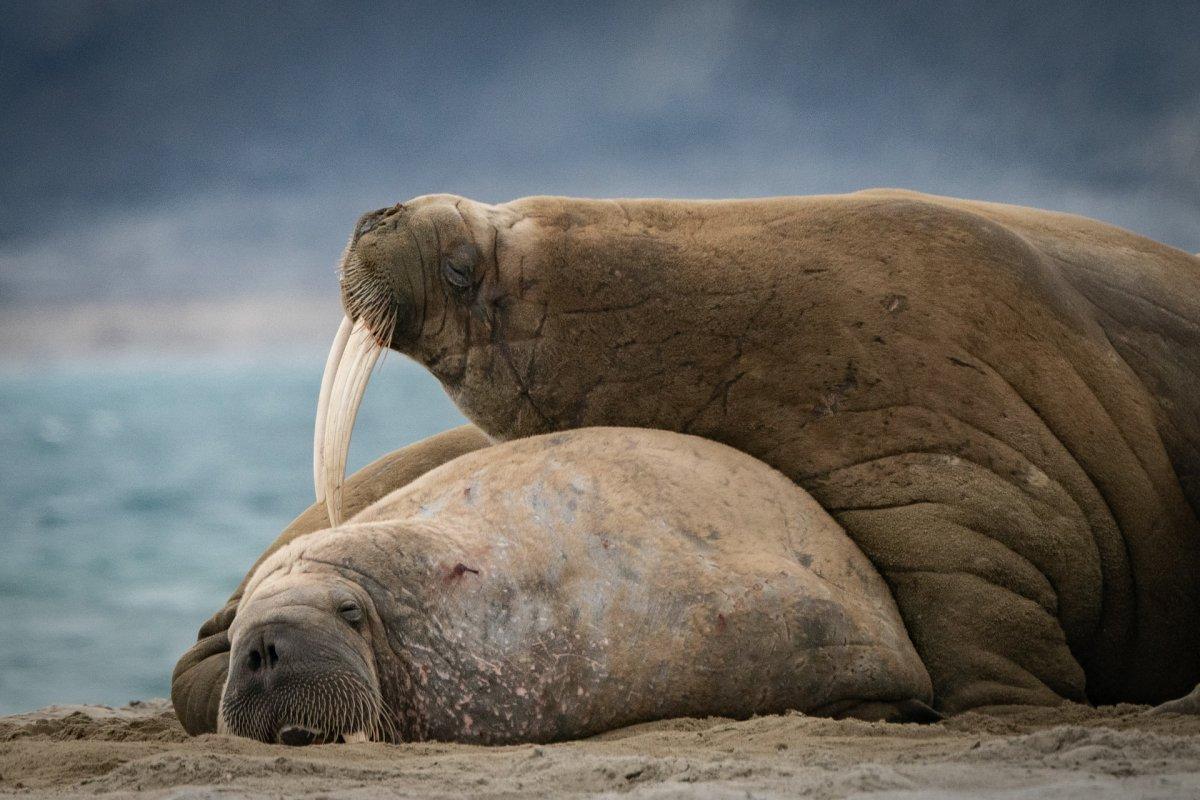
- Name: Walrus
- Scientific name: Odobenus rosmarus
- Conservation status:
The walrus is a very large species of marine mammal native to the coldest waters of the world. It can be found in Alaska, and it weighs as much as 2,000 kg / 4,400 lb!
This animal has long played a critical role in the cultures of several indigenous Arctic peoples, giving them meat, fat, tusks, and skin to survive in one of the harshest regions of the world. Its main predator is the polar bear.
30. Polar bear

- Name: Polar bear
- Scientific name: Ursus maritimus
- Conservation status:
Speaking of which, and as a beautiful way to end this list, here is the polar bear, a sister species of the brown bear that evolved to occupy a specific ecological niche. It is the largest bear and the largest terrestrial carnivore in the world and can be found in Alaska and the rest of the northern portions of the globe.
Sadly, the polar bear has become a symbol of the fight against global warming, its main threat.
—
So there you have them, these were my 30 wild animals in the United States. I hope you enjoyed this list and that you learned something new today.
In case you want to learn more about animals in the country, feel free to keep reading, as I still have lots of things to tell you about:
Endangered Animals of the United States
This is definitely the saddest part of the list, but it is very important to raise awareness. Because of this, let’s go through the list of endangered animals in the United States.
Here are the animals in danger of extinction in the United States (including the rest of the United States as well).
- Thicktail chub
- Steller’s sea cow
- Black mamo
- Phantom shiner
- Labrador duck
- and 51 more…
- Marbled darter
- Red wolf
- Spoon-billed sandpiper
- Ivory-billed woodpecker
- Bog turtle
- and 61 more…
- Red-crowned amazon
- Whooping crane
- Phoenix petrel
- Spotted turtle
- Salt-marsh harvest mouse
- and 169 more…
To see the full list of endangered species in the United States, head over to the International Union for Conservation of Nature’s Red List.
What is the National Animal of the United States?
The national animal of the United States is the American bison.
The American bison is the main symbol of the United States, although it is mostly infamous for having been culled down from 60 million individuals to merely several hundred throughout the 19th century alone. It has long been important to Native American tribes and is a huge part of the United States’ history.
- The American Bison
- The Bald Eagle
Another extremely important symbol in the country is the bald eagle, the country’s national bird. It is featured on the seal of the United States and represents freedom, might, and pride.
How Many Animals Native to the United States?
What is the diversity of native animals in the United States?
Let’s look at the total number of species of Chordata (mammals, birds, fishes, and reptiles).
Total number of animal species in the United States: 5,838 (5,879 in total in North America)
What are all 50 States Animals
Right below is the list of the American national animals, by state:
| State | State animal |
|---|---|
| Alabama | American black bear |
| Alaska | Moose |
| Arizona | Ringtail |
| Arkansas | White-tailed deer |
| California | California grizzly bear |
| Colorado | Rocky Mountain bighorn sheep |
| Connecticut | Sperm whale |
| Delaware | Gray fox |
| Florida | Florida panther |
| Georgia | White-tailed deer |
| Hawaii | Hawaiian monk seal |
| Idaho | Appaloosa horse |
| Illinois | White-tailed deer |
| Indiana | Cardinal |
| Iowa | American goldfinch |
| Kansas | American buffalo |
| Kentucky | Cardinal |
| Louisiana | Brown pelican |
| Maine | Moose |
| Maryland | Baltimore oriole |
| Massachusetts | Boston terrier |
| Michigan | White-tailed deer |
| Minnesota | Eastern timber wolf |
| Mississippi | White-tailed deer |
| Missouri | Missouri mule |
| Montana | Grizzly bear |
| Nebraska | White-tailed deer |
| Nevada | Desert bighorn sheep |
| New Hampshire | White-tailed deer |
| New Jersey | Horse |
| New Mexico | American black bear |
| New York | North American beaver |
| North Carolina | Eastern gray squirrel |
| North Dakota | Western meadowlark |
| Ohio | White-tailed deer |
| Oklahoma | American buffalo |
| Oregon | North American beaver |
| Pennsylvania | White-tailed deer |
| Rhode Island | Harbor seal |
| South Carolina | White-tailed deer |
| South Dakota | Coyote |
| Tennessee | Raccoon |
| Texas | Nine-banded armadillo |
| Utah | Elk |
| Vermont | Morgan horse |
| Virginia | American foxhound |
| Washington | Olympic marmot |
| West Virginia | American black bear |
| Wisconsin | American badger |
| Wyoming | American buffalo |
More About Animals in the World!
Loved these facts about the United States wildlife? Want to see what animals live in other countries?
Then check out these posts:
- Wild Animals in Alabama
- Wild Animals in Idaho
- Wild Animals in Illinois
- Wild Animals in Indiana
- Wild Animals in Iowa
Or click here to see ALL the facts up on the blog! Spoiler alert: there’s A LOT of them.
Share the knowledge! Click on the buttons below to share information about these famous American animals with your friends, and help them learn more about the world 🙂
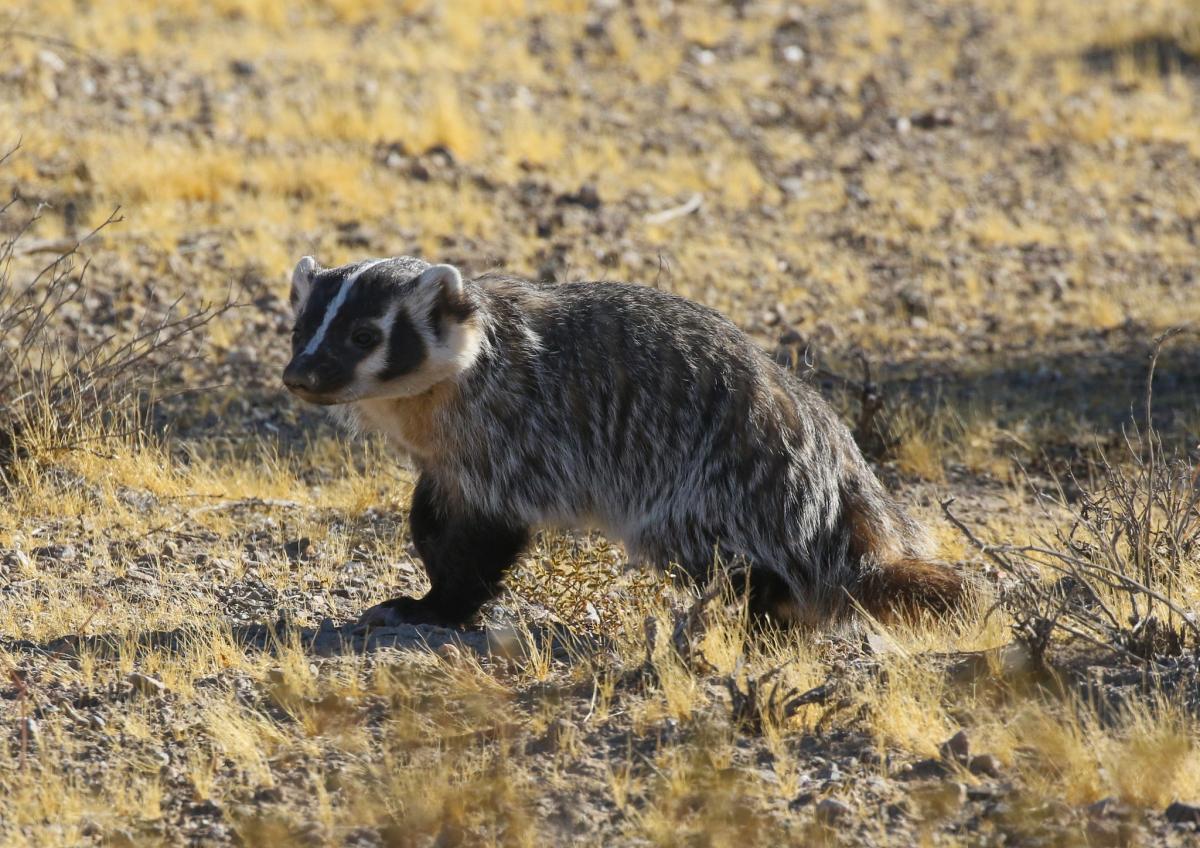
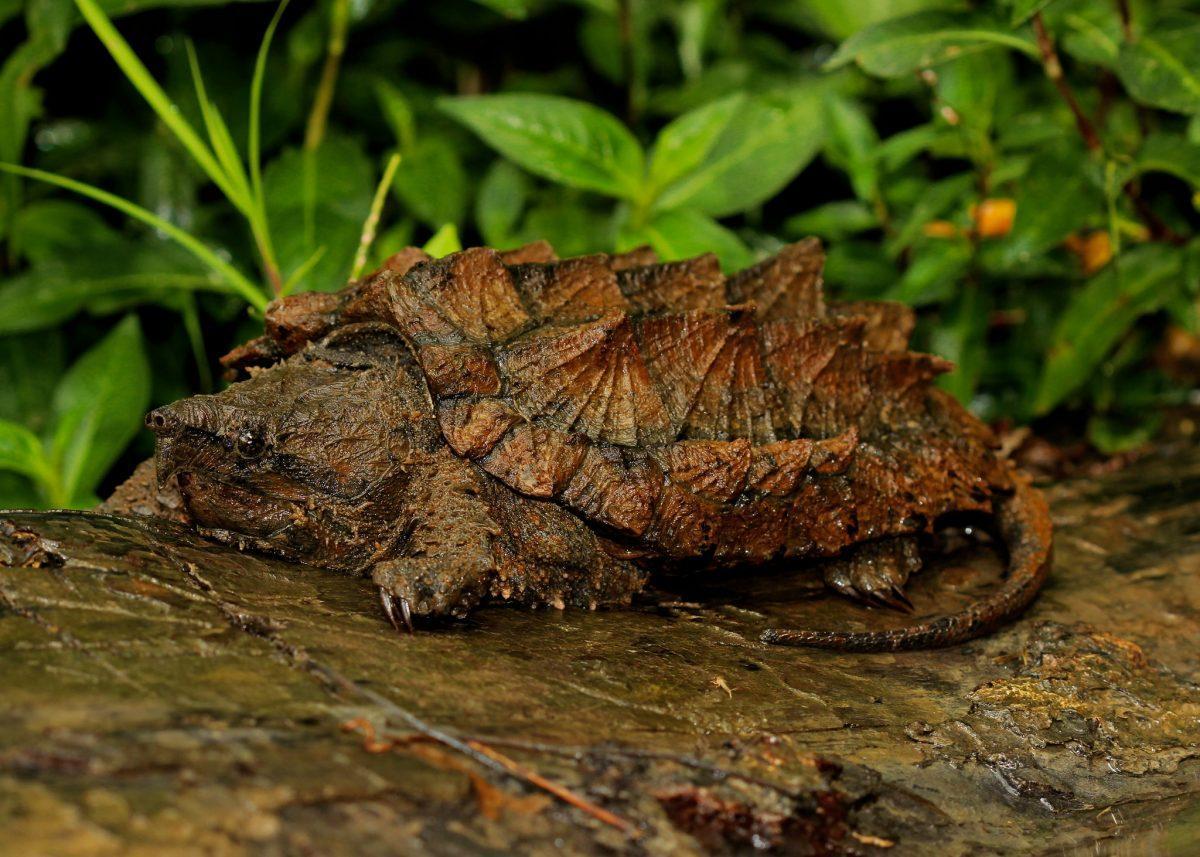
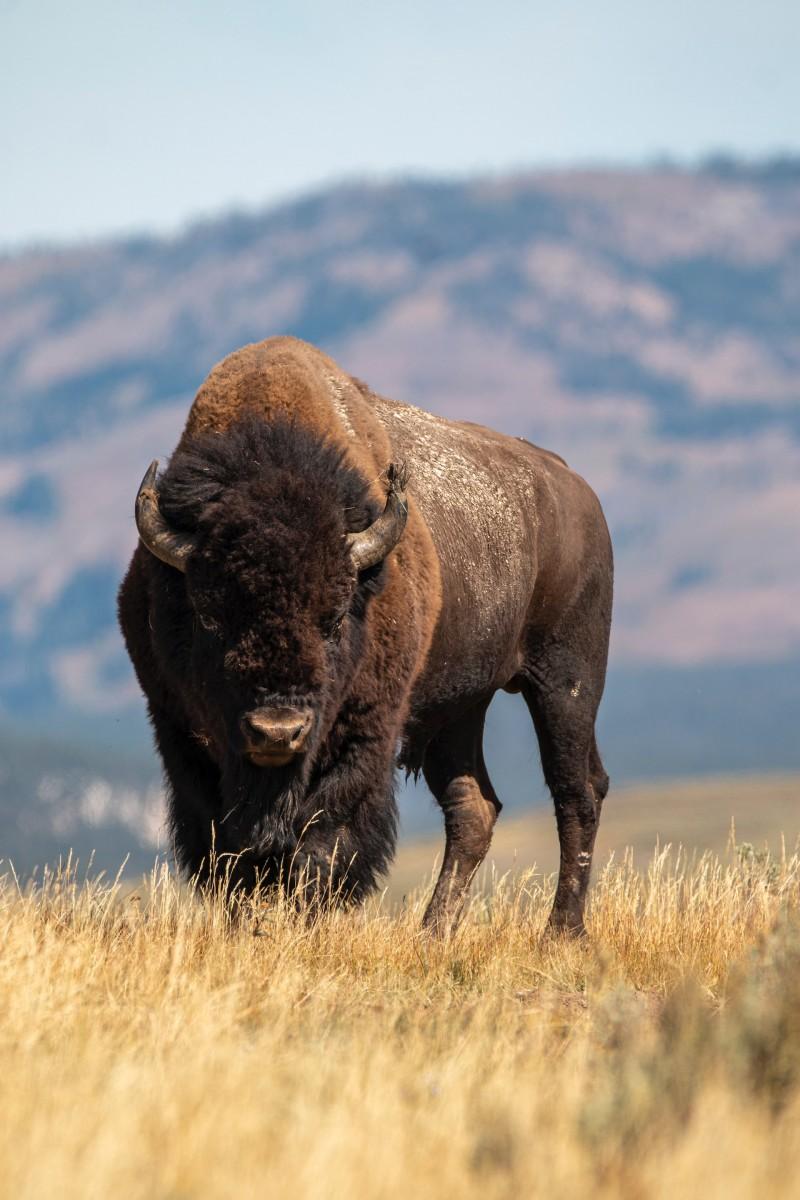
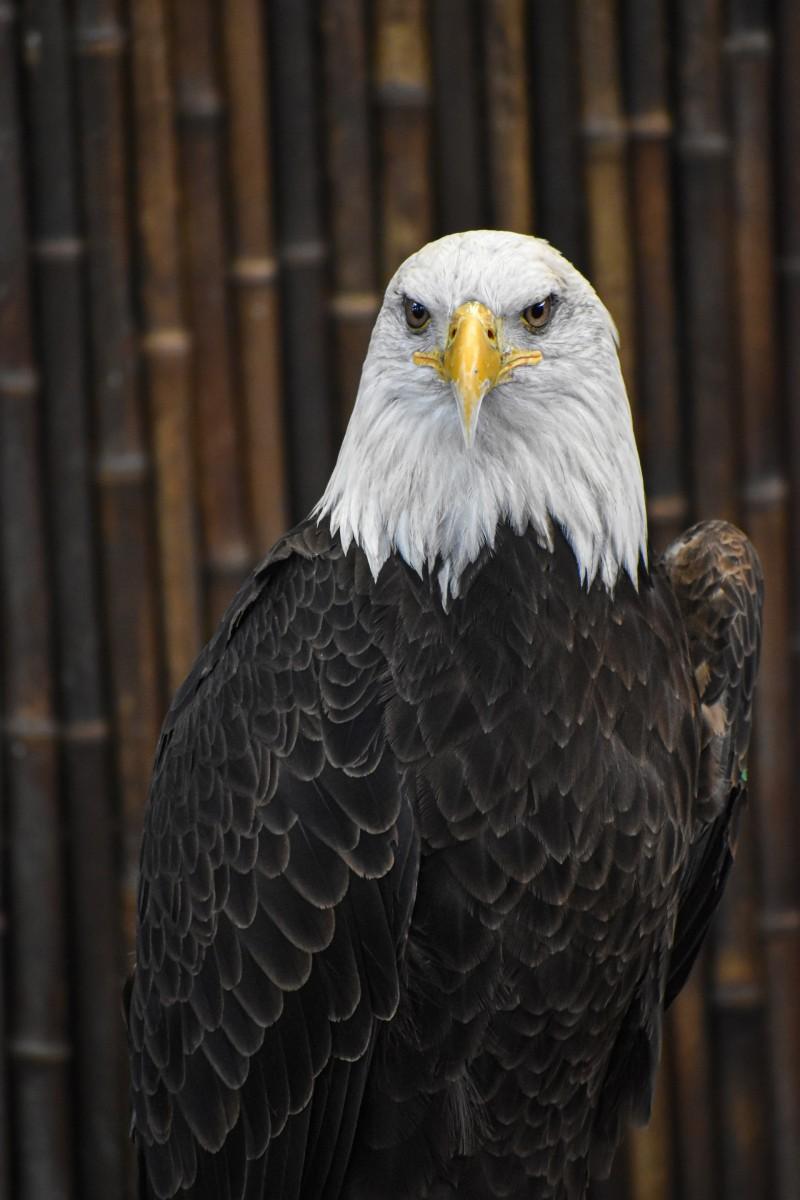

![21 Wild Animals in Sri Lanka [Wildlife in Sri Lanka]](https://www.kevmrc.com/wp-content/uploads/2022/12/21-wild-animals-in-sri-lanka.jpg)
![21 Wild Animals in Indonesia [Wildlife in Indonesia]](https://www.kevmrc.com/wp-content/uploads/2022/12/21-wild-animals-in-indonesia.jpg)
![12 Wild Animals in Rwanda [Wildlife in Rwanda]](https://www.kevmrc.com/wp-content/uploads/2022/12/12-wild-animals-in-rwanda.jpg)